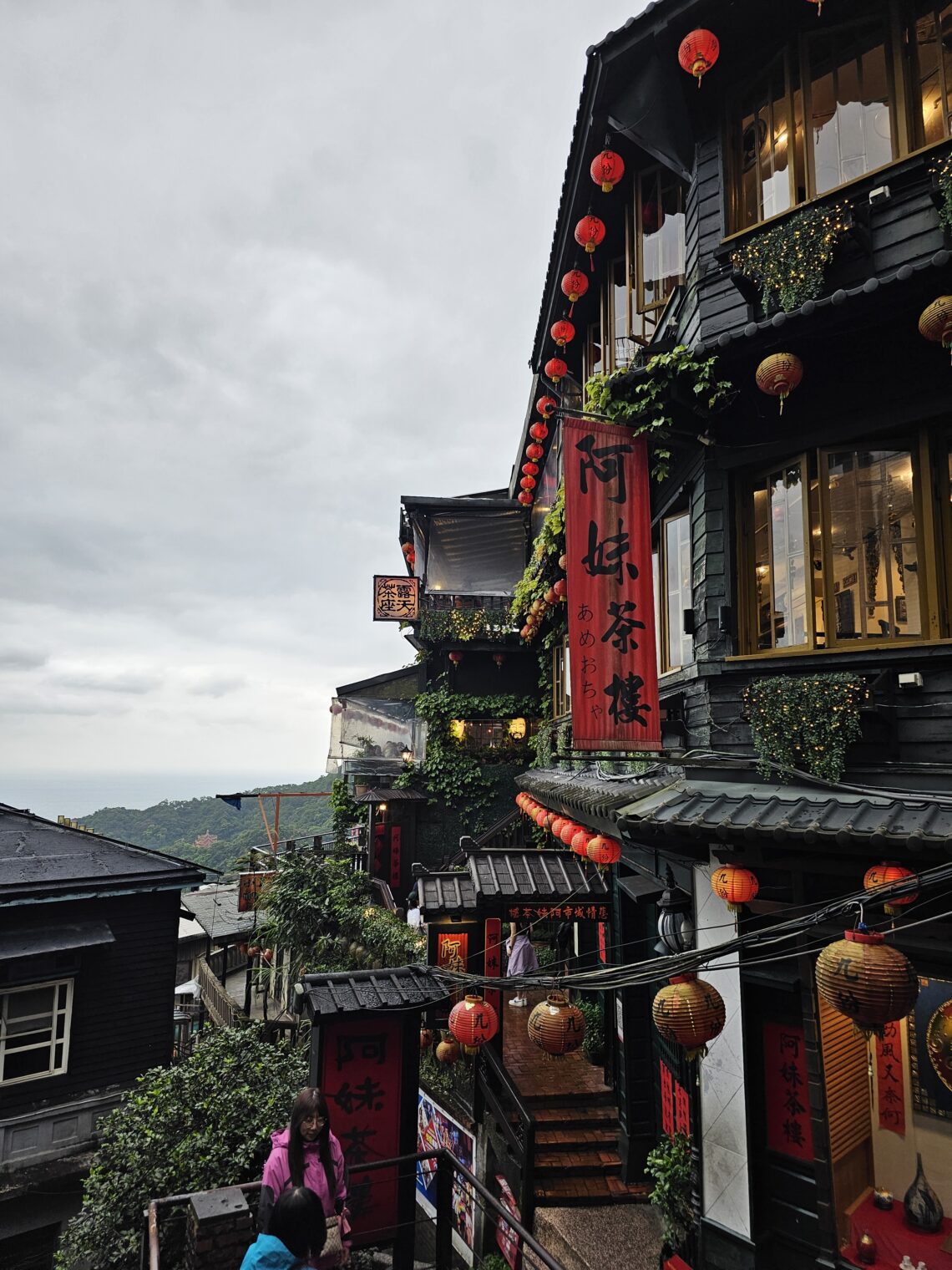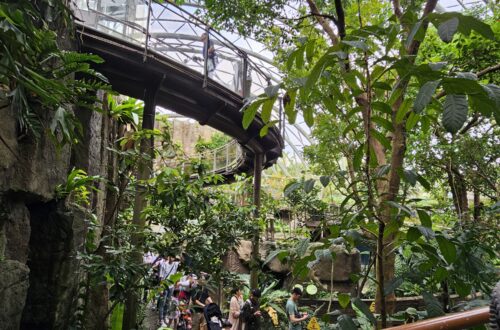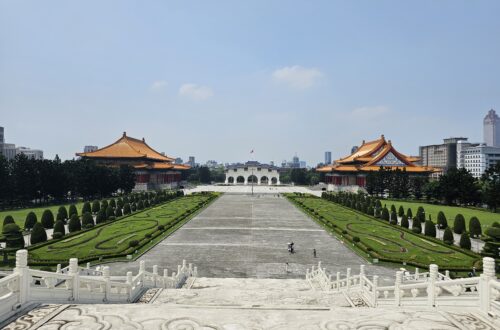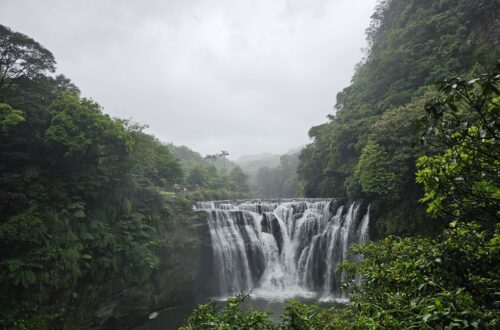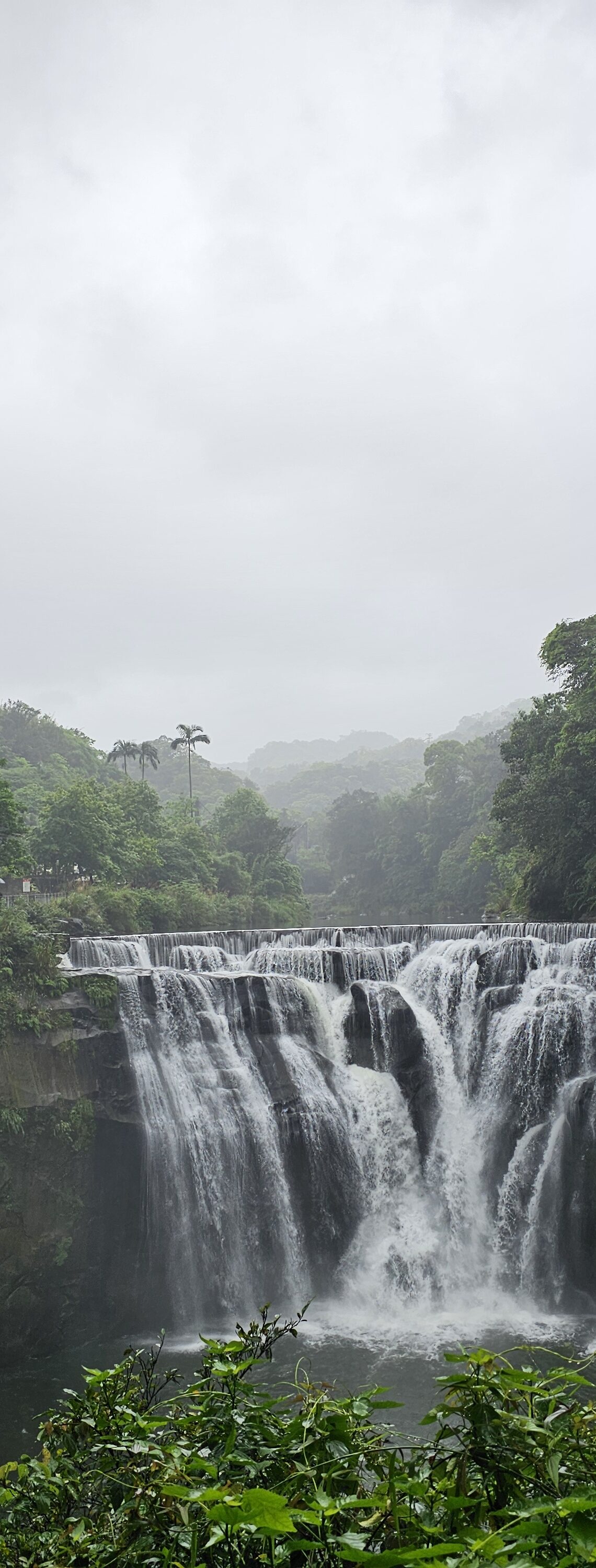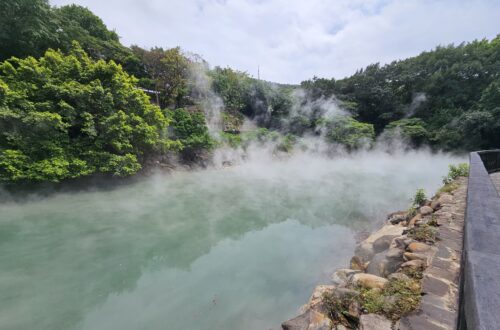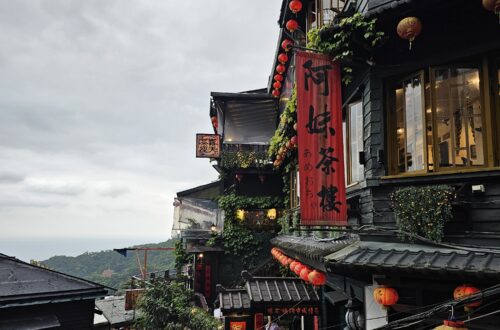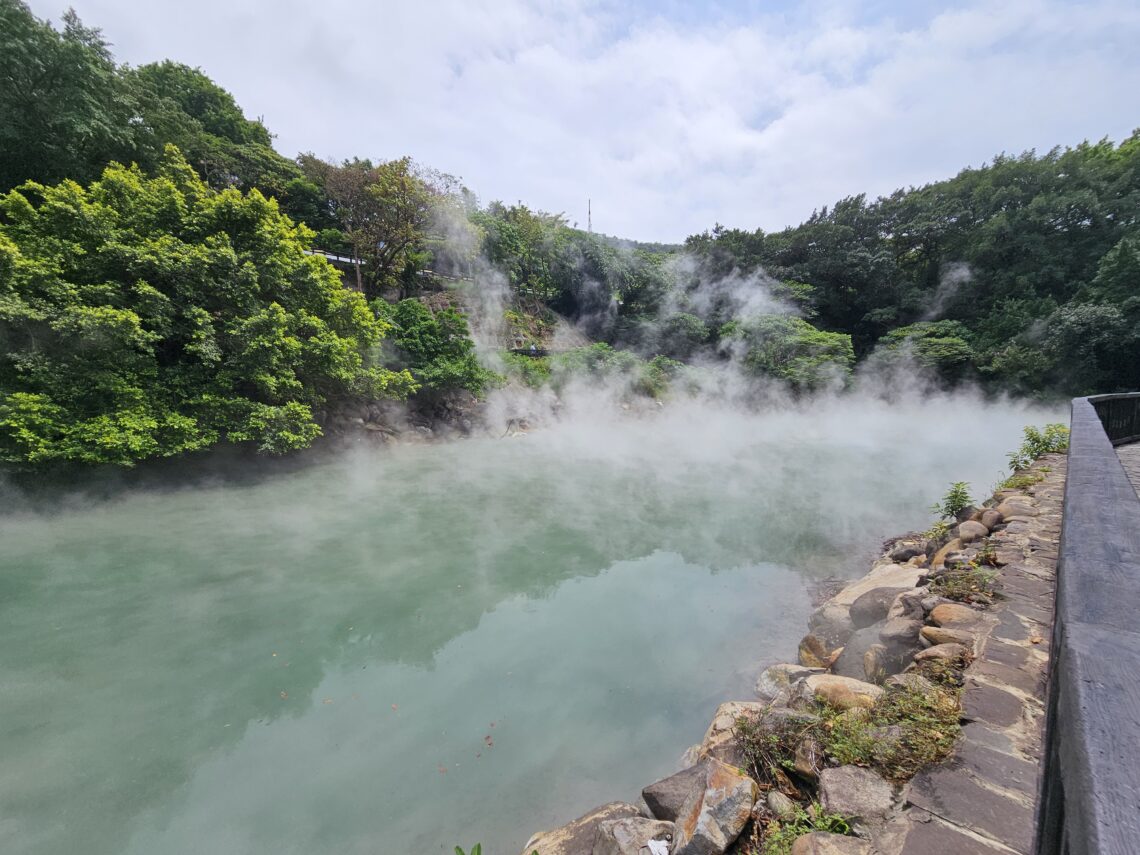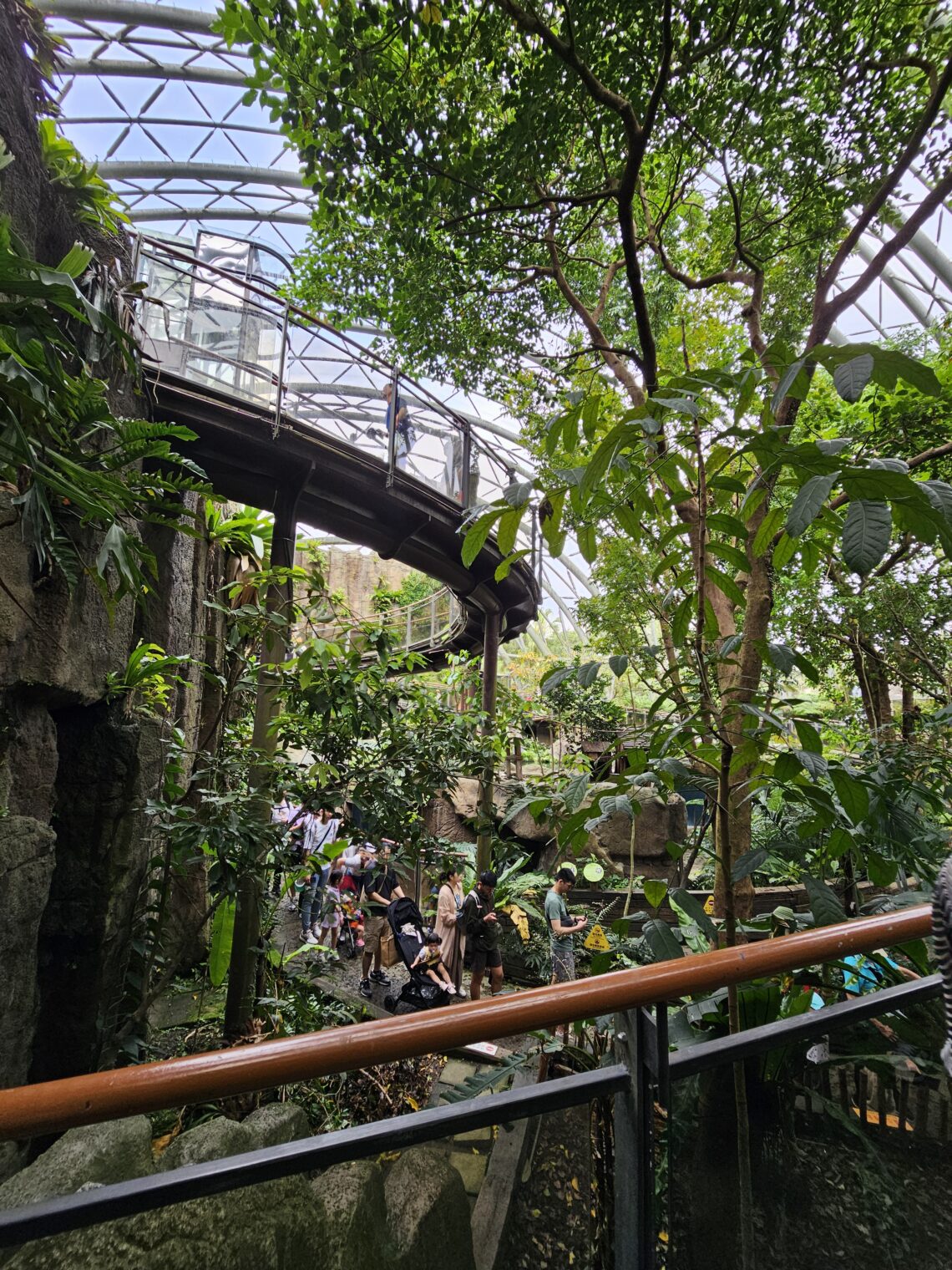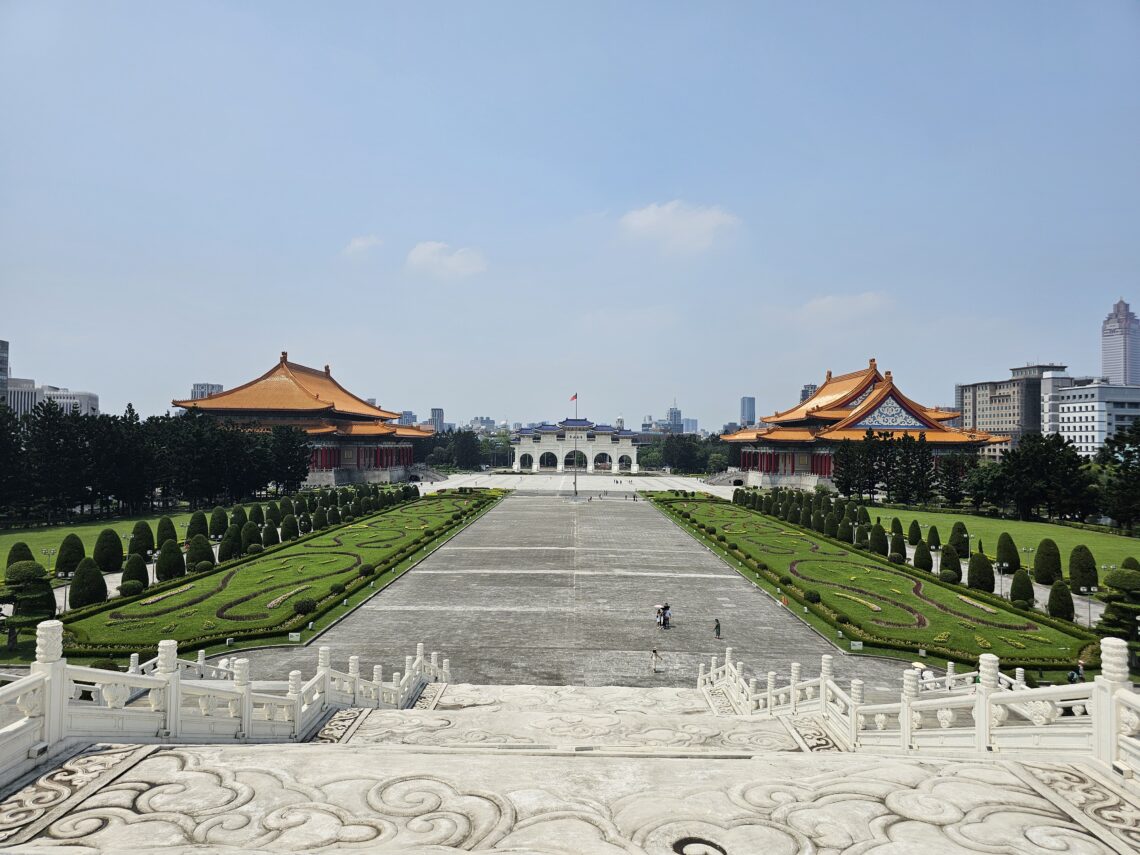Taiwan
-
Is The Popular Jiufen A Must-Visit In Taiwan?
Located in the Ruifang District of New Taipei City, Jiufen is a former goldmining village located in a seaside mountain area with the famous Jiufen Old Street as its main attraction.
It’s a very popular tourist spot in Taiwan and offers some incredible views of the sea. Jiufen itself, specifically the Old Street area, is very photogenic with the narrow alleyways and numerous red lanterns hanging all over the place. It’s a totally different vibe than Taipei.
Table of Contents
Why Is Jiufen Popular?
Located in the mountains, the town of Jiufen became extremely popular amongst tourists due to its similarity to the magical town in the famous animated movie Spirited Away. The similarities include the numerous illuminated red lanterns found in the movie which strongly resemble those found in Jiufen.
The movie’s famous director Hayao Miyazaki, has repeatedly shot down this rumor and insists the village found in Spirited Away is not based on Jiufen. This hasn’t stopped tourists from coming here in droves to witness it, since it does have similar vibes to what’s found in the movie.
Jiufen Old Street
Besides being known for looking similar to the village in Spirited Away, Jiufen Old Street in general is quite well-known. The street (it’s more of an alley) is chalk full of souvenir shops, food stalls, restuarants, teahouses, and even pottery stores. It branches off into other narrow alleyways with even more shops and various stores and stalls. You’ll encounter numerous steps going up and down while exploring through these alleys, so you will 100% get a workout in. Be ready for the steps!
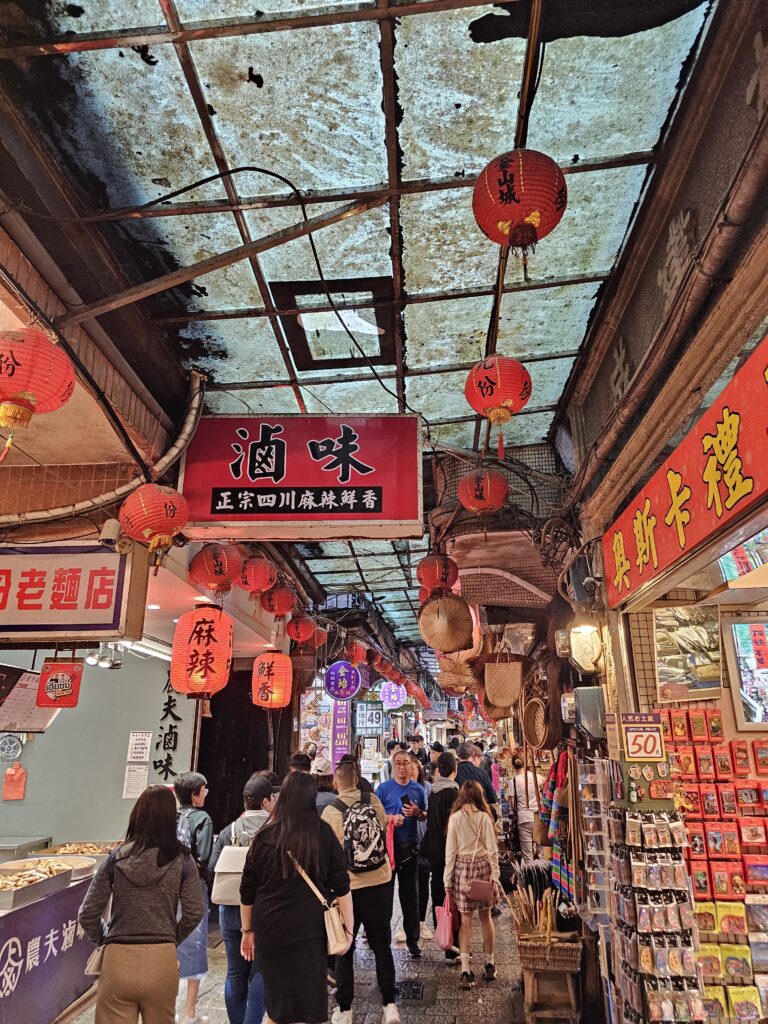
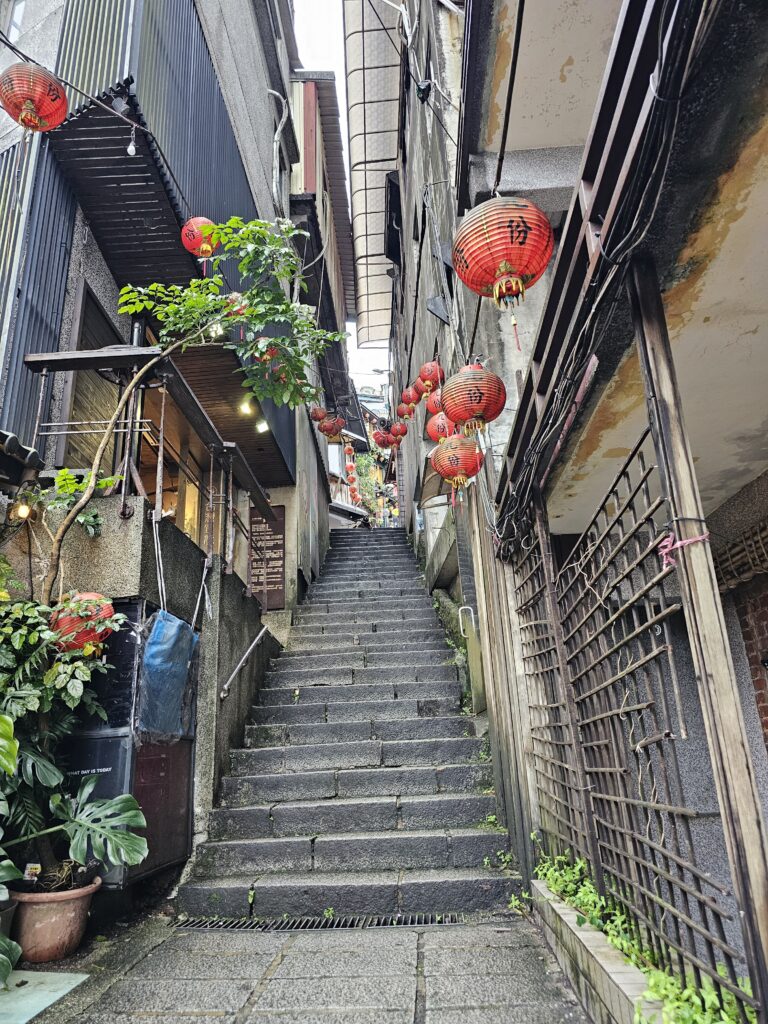
The street and the numerous alleyways are fun to meander through, get lost in, while embracing the uniqueness of the atmosphere and the surroundings. Spirited Away may not be based on this wonderful village, but if you’ve seen the movie you can see the similarities.
The Food
There’s a ton of food options on Jiufen Old Street. It all comes down to preference and what you may be either looking to try or craving. So far during my trip I hadn’t had the famous braised pork rice bowl, that’s one of the most popular dishes in Taiwan. I figured why not give it a try while exploring Jiufen?
I came across a place serving braised pork rice pretty early on while walking into the Old Street. I was quite hungry so decided to stop by and get my first taste of this famous dish.
With this being my first bowl, I wasn’t sure if all the toppings and trimmings included on this bowl were the standard or not, but this had spinach, tofu, egg, braised pork, and mustard greens over a bed of rice. The bowl was only (110 NTD, $3.12 USD), so certainly a solid price for a meal in a super touristy area.
The food itself was pretty solid. Nothing too mind boggling good, but this is a tourist area, so can’t complain too much. The bits of pork were pretty fatty and juicy and melted in my mouth. There wasn’t too much of the pork though. The sauce that covers the pork is slightly sweet, but not an overwhelming flavor. The rest of the toppings added different textures, the egg and mustards greens were my faves of the bunch, overall the toppings were enjoyable and added value to the bowl as compliments to the braised pork.

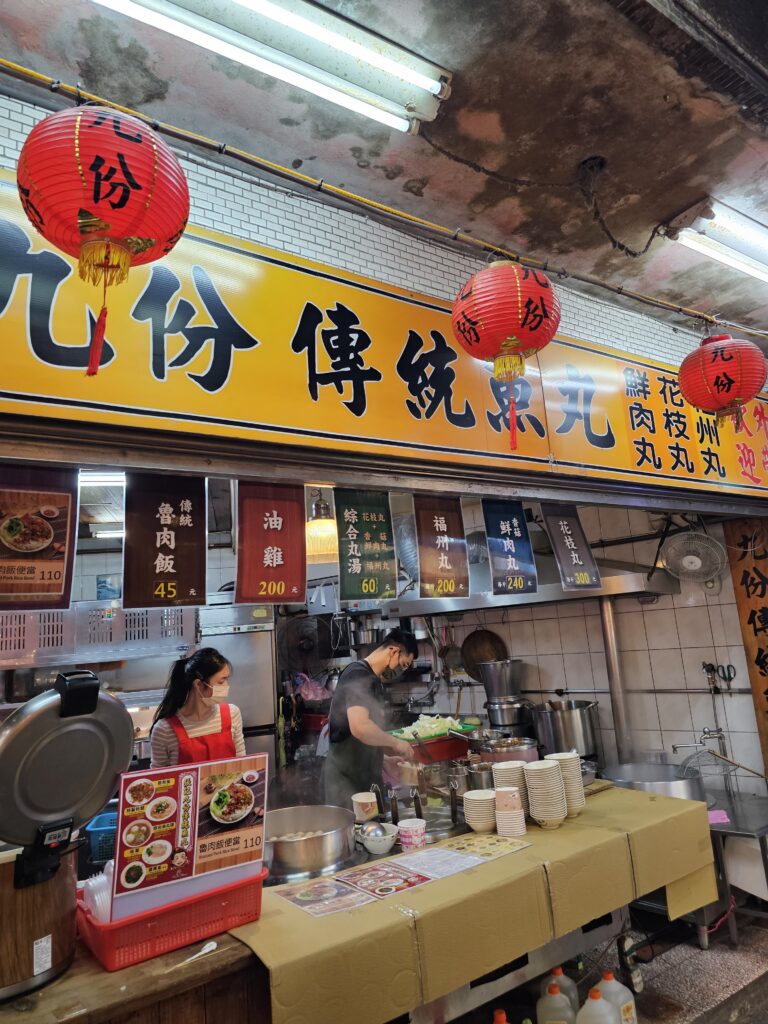
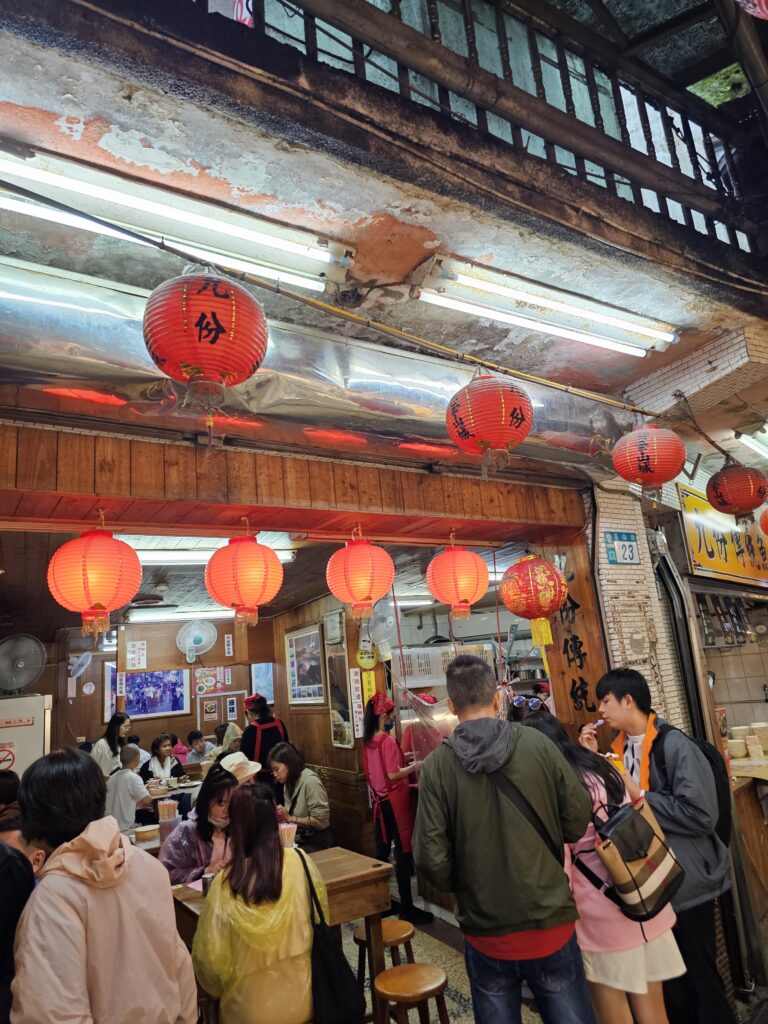
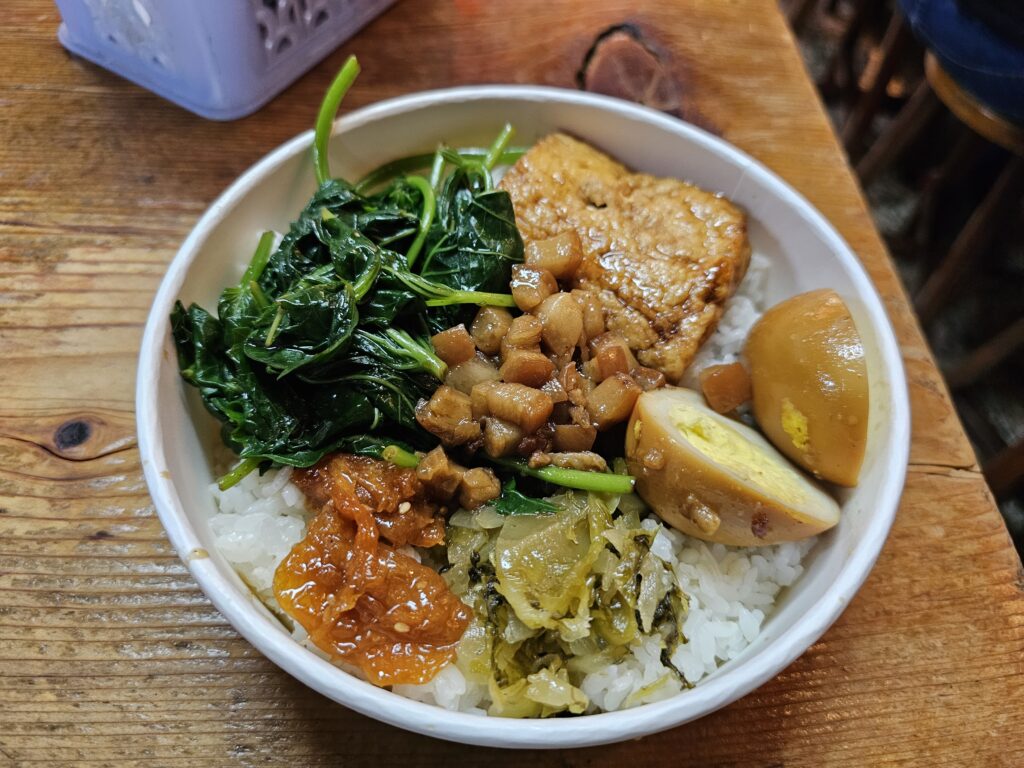
After eating the braised pork bowl, I was still a little hungry and wanting a little snack to fill me up. Luckily, there’s no shortage of snack related food pretty much everywhere in Jiufen Old Street.
I settled on getting a Taiwanese sausage on a stick. Seemed like a “light” snack, which was exactly what I was looking for.
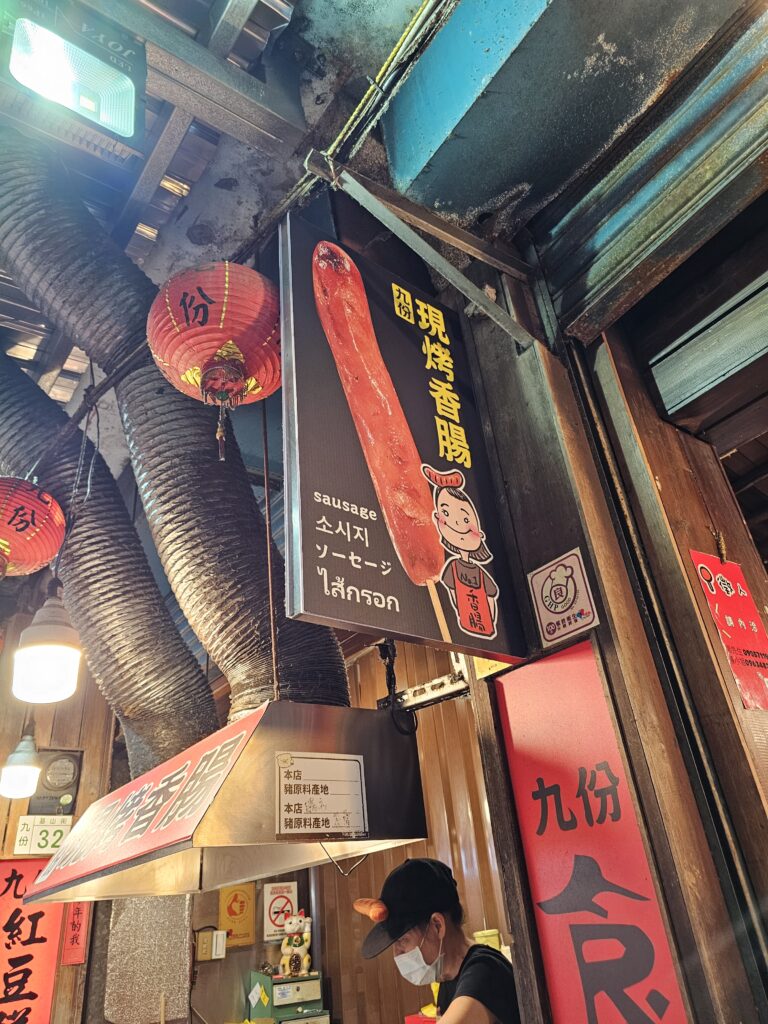
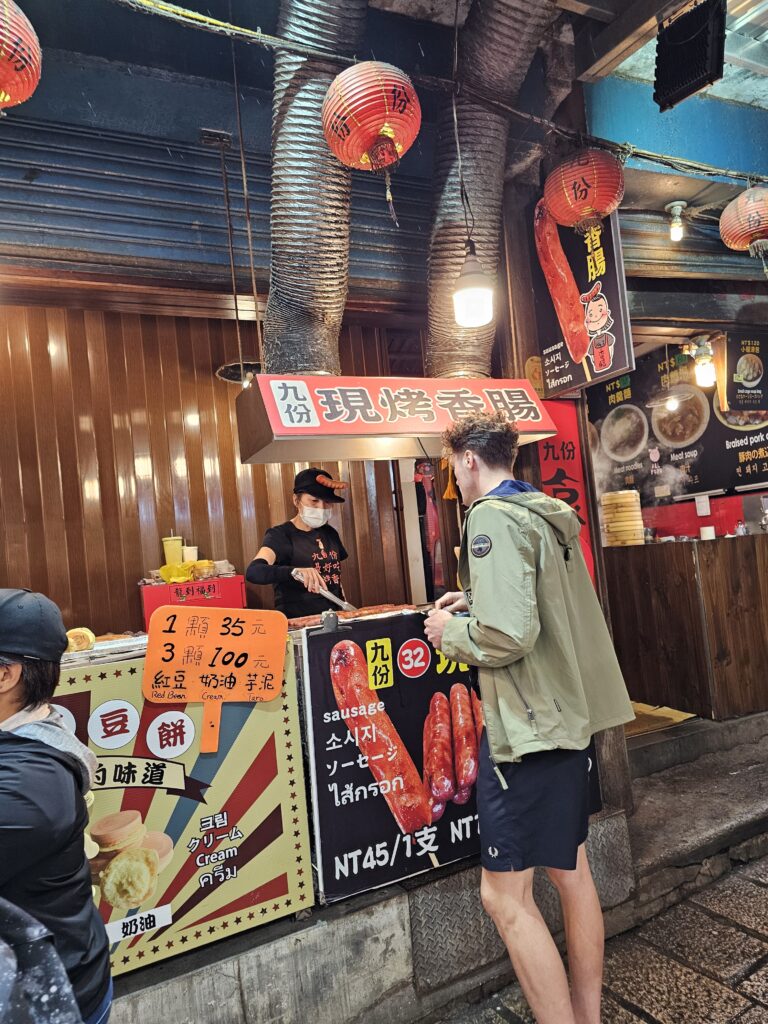
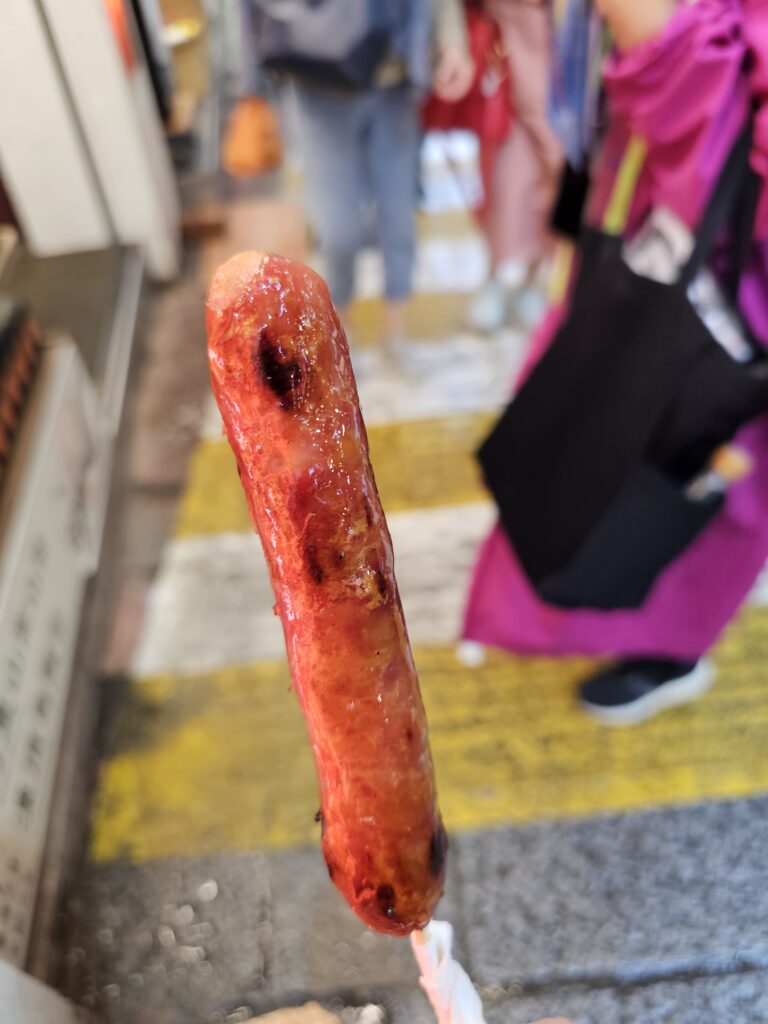
It literally is a sausage on a stick, which pretty much resembles a hot dog. It definitely had a crispy outside to it and was super juicy on the inside. It was a little sweet and savory and quite tasty. Super cheap snack as well (45 NTD, $1.40 USD) that really hit the spot.
The Views
There are views aplenty in Jiufen and the atmosphere makes you feel like you’re in a fantasy mountain side village. One of the most popular locations within Jiufen is the Jiufen Teahouse. It’s an iconic teahouse which offers a very unique building and an awesome view of the coast. It’s a very popular place. I didn’t end up grabbing a tea here (I was short on time unfortunately) but definitely would love to grab one whenever it is I come back.
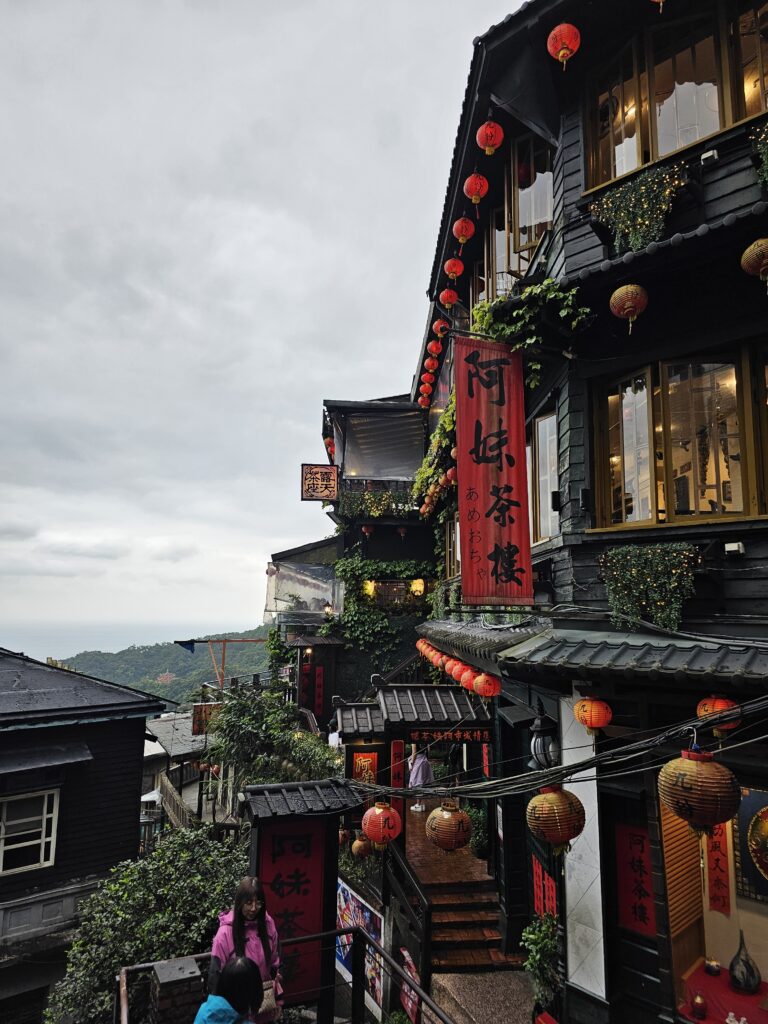
Just walking around Jiufen you are going to run into some awesome views. This was just at the end of one of the many offshoot alleys of Jiufen Old Street. There are a lot of teahouses or places where you can grab a beer and some finger foods that look out on the coast like this as well. Plenty of great places to take a breather either from all the stairs or the crowds or both and relax and enjoy some truly beautiful views.
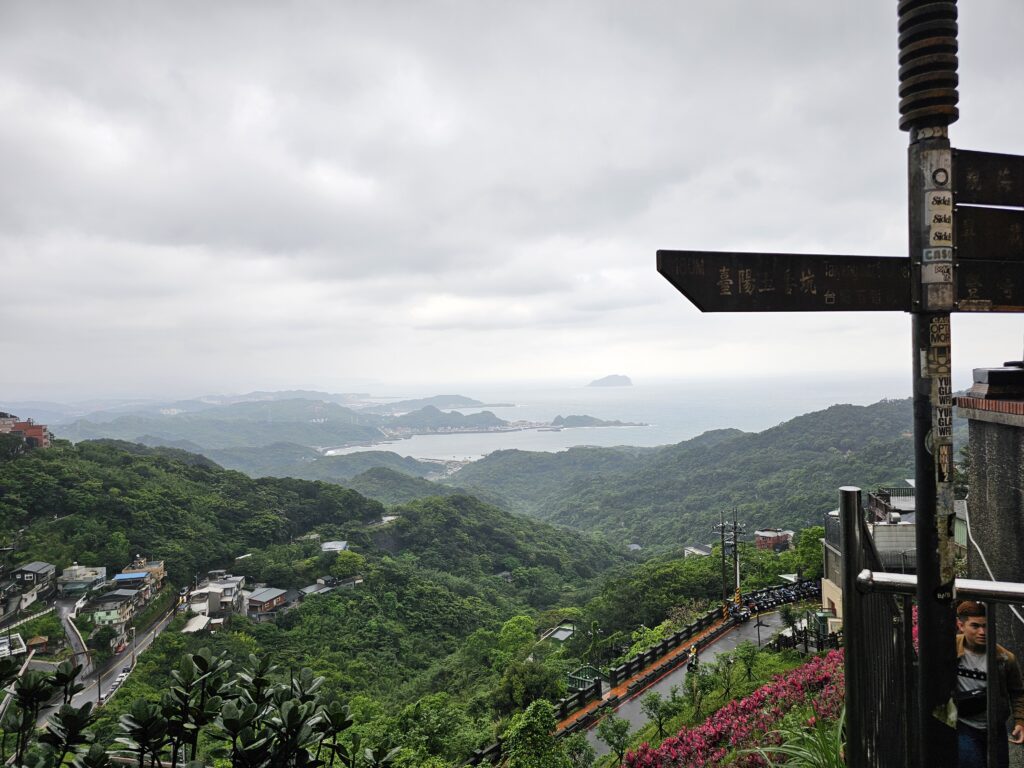
-
Is The Spectacular Shifen Waterfall Worth The Trek From Taipei?
If you’re visiting Taiwan, a trip to Shifen is likely on your “to do” list. The Shifen Waterfall and Shifen Old Street are two immensely popular tourist destination for good reason. They are certainly unique sights.
With that being said, it’s a little out of the way from Taipei and making the trip can take some time if using public transportation and require switching trains (if that’s the chosen mode of transportation) which can be a little confusing if you’re not too familiar with the trains in Taiwan.
So is it worth the hassle?
Shifen Old Street
If you take the train from Taipei to Shifen it will drop you off right on Shifen Old Street. You just have to exit and walk out of the train and down along the train tracks. It’s that easy!
Here you’ll find both sides of the train tracks lined with various shops and places to eat. It’s a cool little area and trains literally will run down the middle every once in a while which is pretty neat to see. It’s not a super big street by any means, but there’s a certain charm to it.
Shifen Old Street is the very famous area where you can purchase a sky lantern and release it into the sky. You’ve probably seen this on videos about Shifen or popular things to do while in Taiwan.
You can purchase a sky lantern and draw / write whatever you please on it’s sides. Once you’re all set, the lantern gets lit and then released and you can watch it soar up into the sky. It’s certainly an experience that people really enjoy.
Shifen Old Street is a little touristy as you might expect, but it’s a fun little street to walk down and check out the various shops and decorate / release a sky lantern as well!
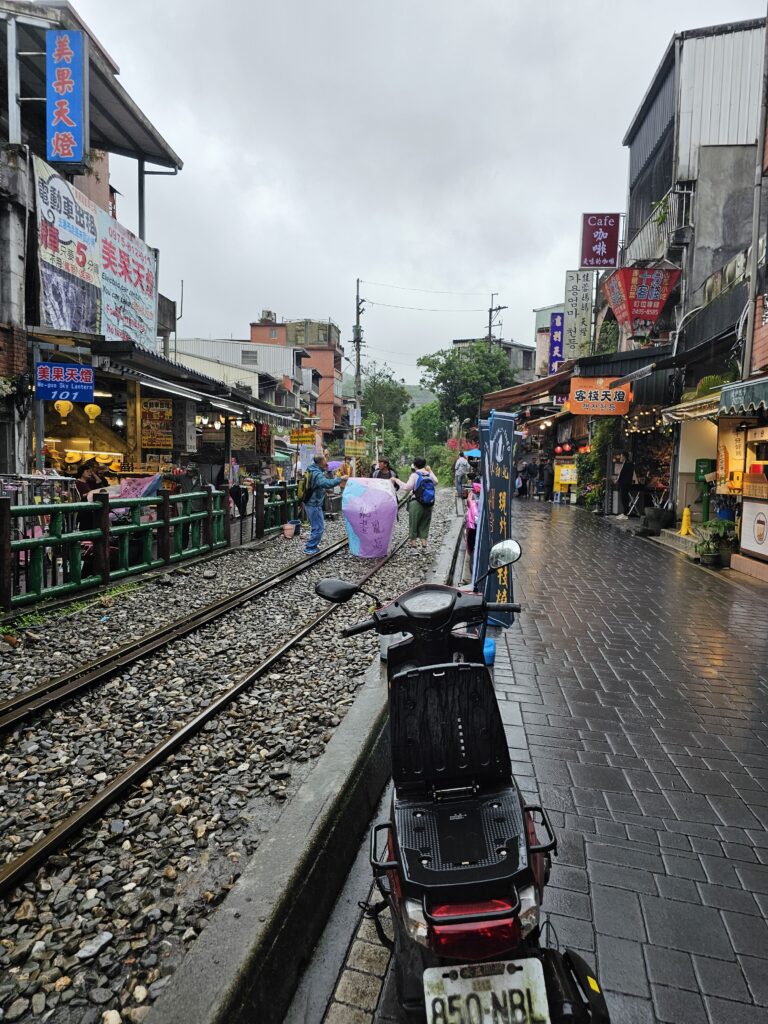
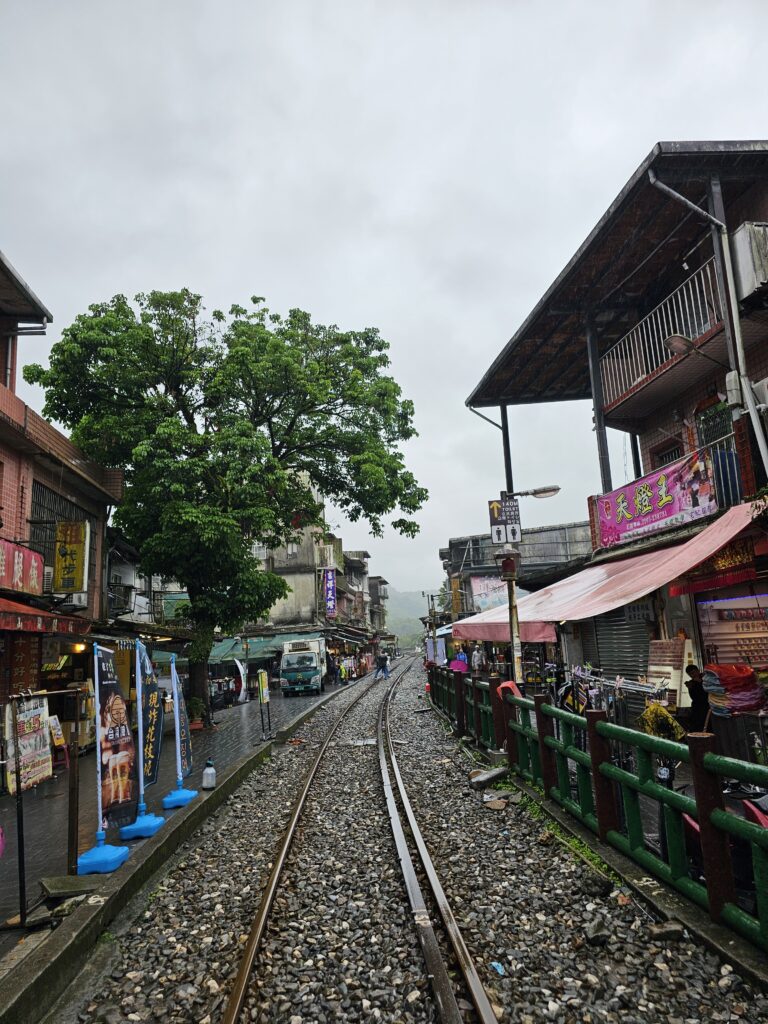
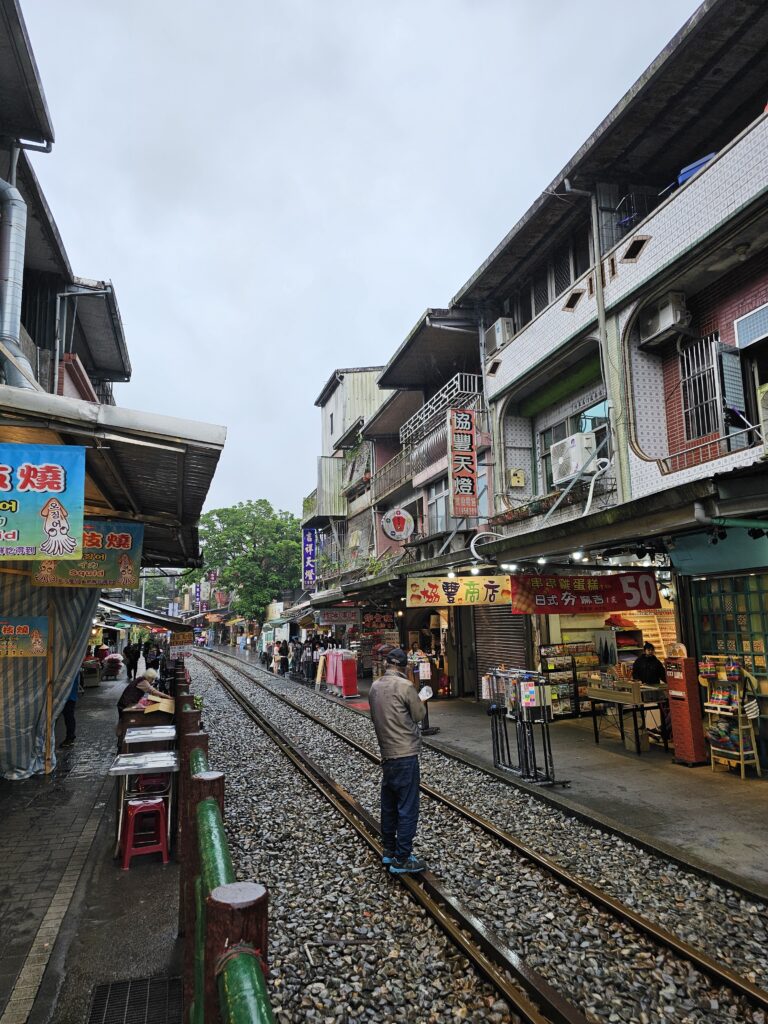
Shifen Waterfall
Adjacent to the Shifen’s Old Street is the Shifen Waterfall, which is located on the upper reaches of the Keelung River. It’s about a 30-minute walk from Old Street, depending how fast of a walker you are.
It’s a nice little walk, not very strenous at all, which starts as soon as Old Street ends which leads you to the highway. You walk along the highway (you’ll see a ton of people making the trip so you can follow the crowd but there’s also maps / signs to guide you) and then hit the Visitor Center which has restrooms, if needed. From there you’ll walk across your first suspension bridge and continue up the river trail, walk up some stairs and then cross another suspension bridge.
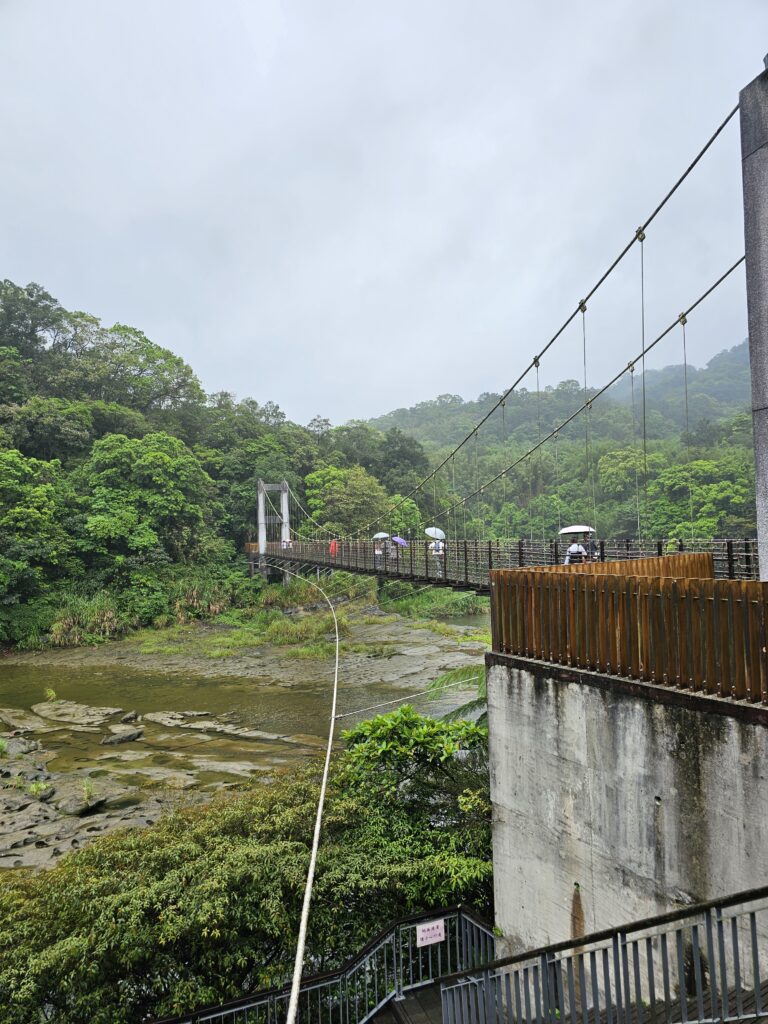
From there you’ll walk past a small Buddhist shrine that has several horse statues in front of it. Directly next to the shrine run are some tourist stalls that are selling souvenirs and food.
Once you walk past this short row of shops you’ll be at the waterfall. Whew!
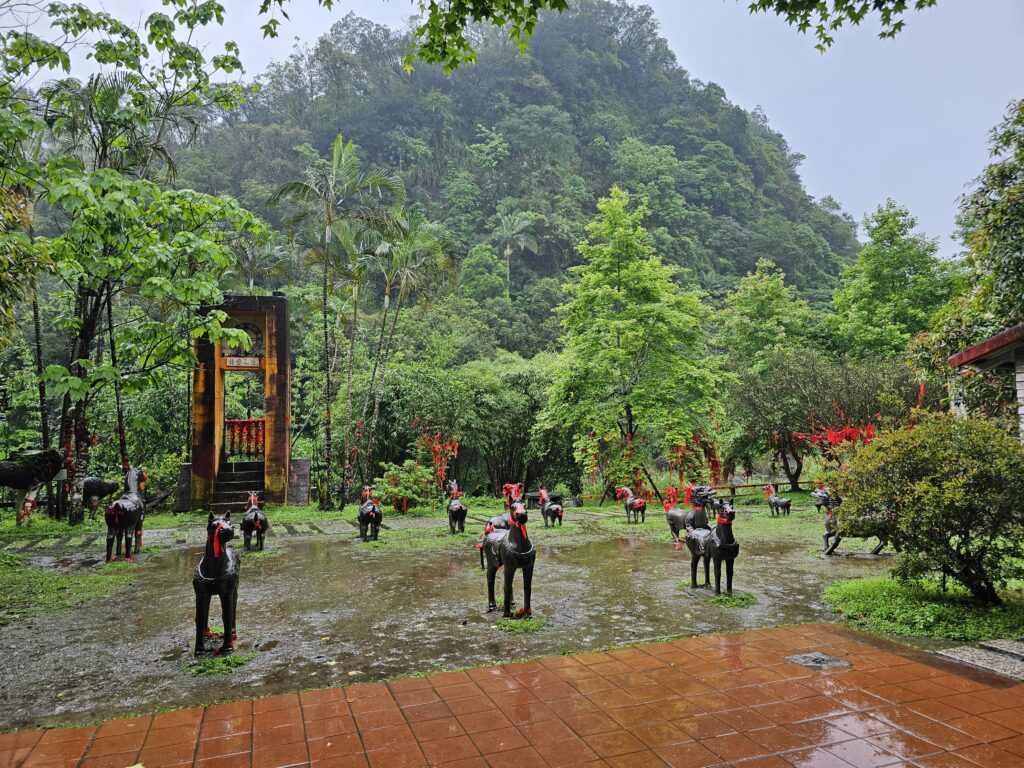
Shifen Waterfall is about 66 feet high and 130 feet wide and is certainly a beautiful sight to behold.
Once you get to the waterfall area, you’ll get to view it from multiple platforms at different levels where you can snap some pictures and enjoy the scenery of the waterfall and surrounding wilderness. It’s quite nice, even when raining!
There will definitely be crowds. This is one of the most popular tourist destinations, so be prepared for crowds. Even though it was a little drizzly there was still a decent number of people viewing the waterfall.
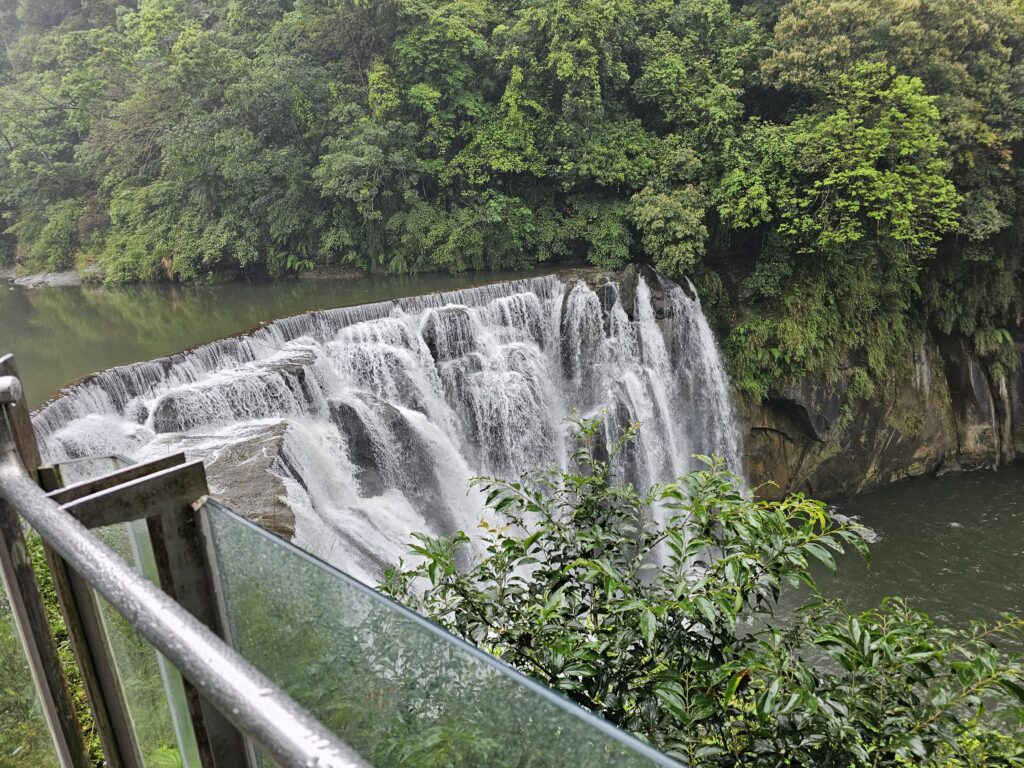
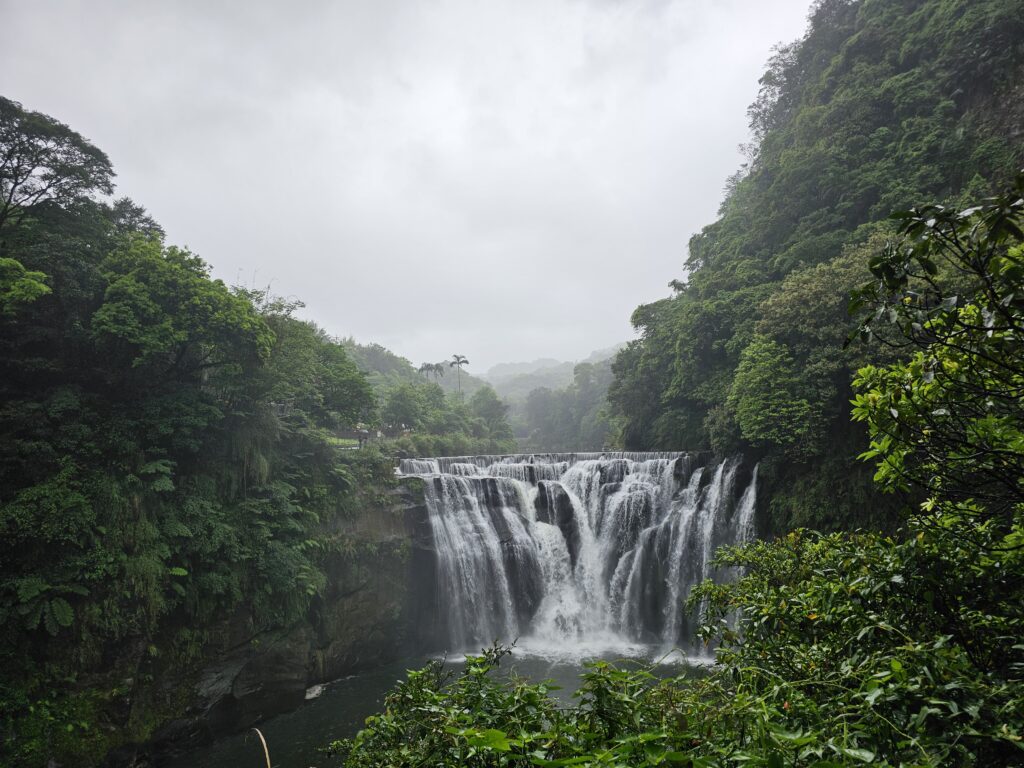
Is Visiting Shifen Worth The Effort?
Shifen is one the most popular tourist destinations in Taiwan. It’s a great opportunity to get out of Taipei, experience some nature and see a quaint little street full of shops and sky lanterns floating up to the sky. The waterfall is definitely quite a sight to see and admire and just enjoy the moment. The walk is scenic and isn’t difficult to do. Overall, you can spend a few hours here and it’s certainly worth the trek!
-
Is The Beautiful Beitou District Worth Visiting In Taipei?
Beitou is a popular tourist destination for both international travelers and domestic travelers alike due to its famous hot springs. Located in the northernmost part of Taipei, Beitou can feel like a completely separate city than Taipei. If you need a break from the hustle and bustle of Taipei, Beitou can be just the place for you.
Table of Contents
The History of the Beitou District
What makes Beitou so popular and famous is its hot springs. The hot springs have long been used by whomever has occupied the area.
The aboriginal people of Taiwan whom lived in the area had long used the hot springs prior to any foreigners.
Once trade to Taiwan opened up, German merchants established a hot spring club at one point in Beitou.
The hot springs were recognized, utilized and, ultimately commericalized, during Japanese rule (1895-1945). The first hot spring hotel (Tianguan Hot Spring Hotel) was built in 1896 and the first public hot spring bath (Beitou Hot Spring Public Bath) was constructed in 1913.
Japanese rule in Taiwan ended in 1945 and was handed back to China. Beitou fell under Taipei jurisdiction in 1968. The area declined for a period of time in the 1980s before it slowly started to rebuild itself and gain popularity once again.
Today, there are over 30 hot spring resorts in the district, one of the largest concentrations of hot spring resorts in the world.
Beitou Hot Spring Museum
The Beitou Hot Spring Museum was originally built as a public bathhouse and was constructed in 1913. After Japanese rule ended in Taiwan in 1945 the building was used in a variety of different ways but was eventually abandoned. The corrosive nature of the local hot springs had taken hold of the building and done its damage. It wasn’t until 1995 when Taiwan’s Ministry of the Interior declared the building a historical site. In 1998, a major renovation of the building took place and the Beitou Hot Spring Museum was created.
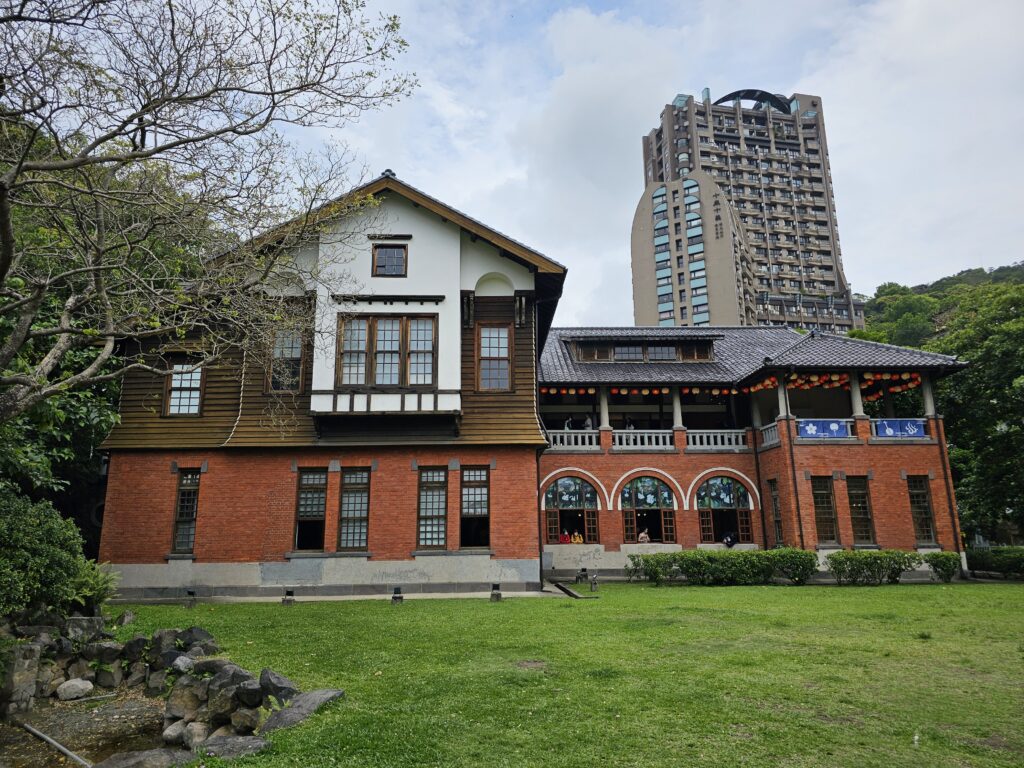
This little museum is free of charge and provides the history of the hot springs in Beitou, from it’s humble beginnings to its fall, and then its restoration and rise to the popular tourist destination it has now become.
It still retains some of the original bathing rooms, which is pretty interesting to see and to learn about!
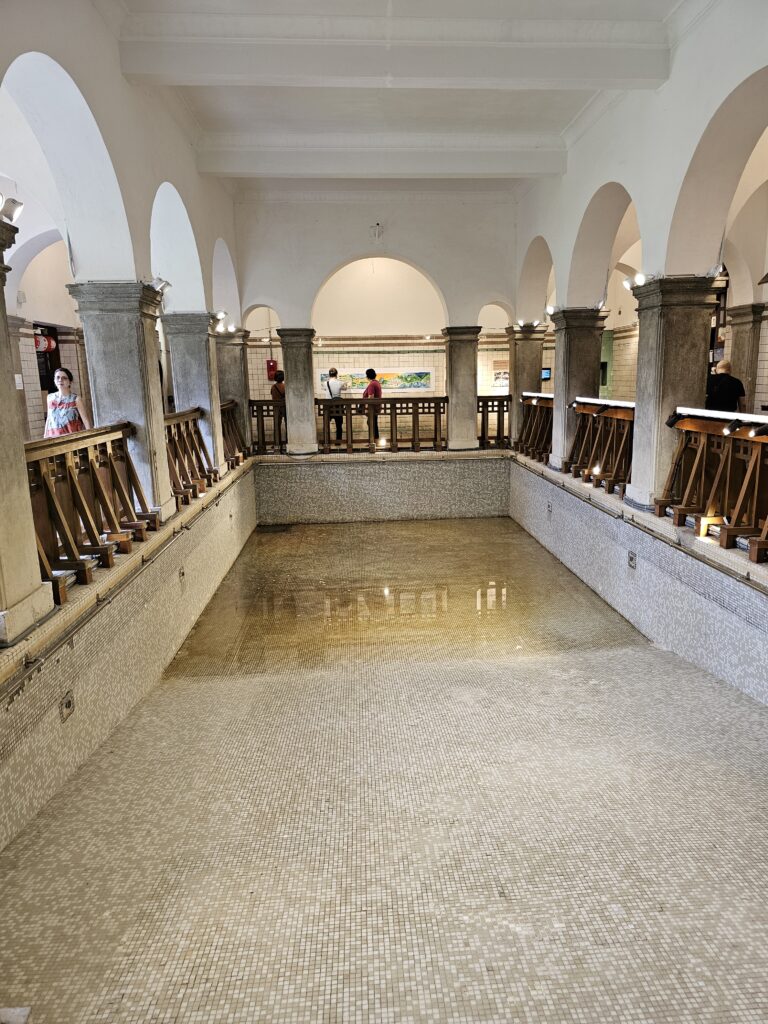
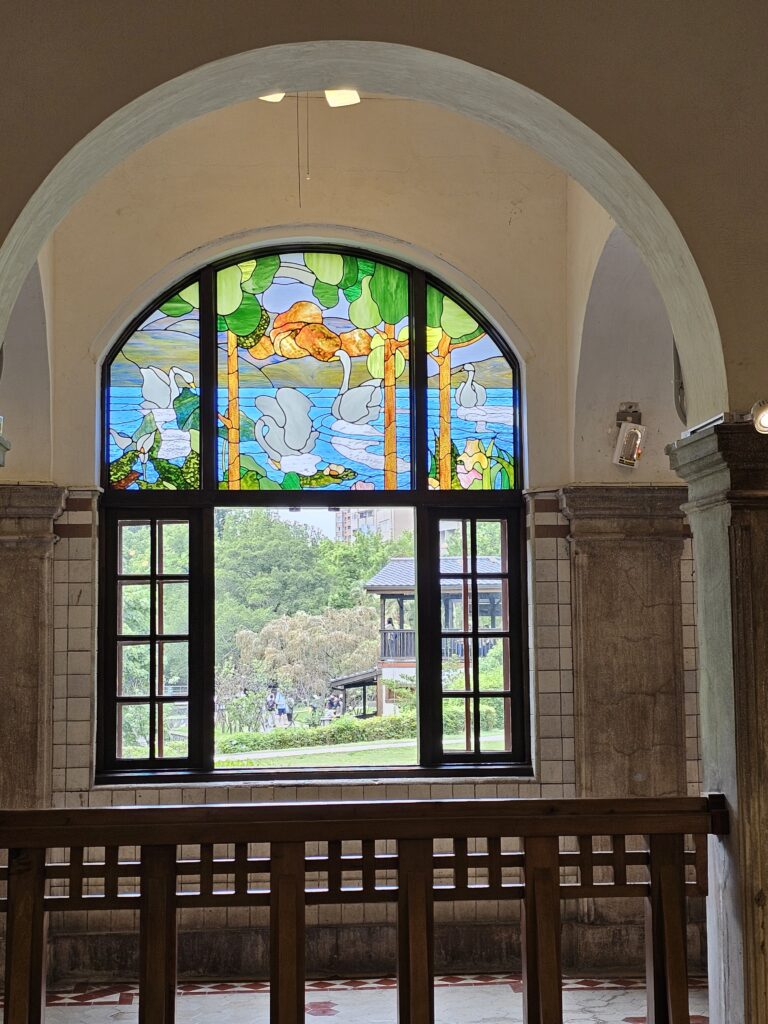
Beitou Library
Located right next to the Hot Spring Museum is the Beitou Library. The first “green” library in Taiwan, this distinctive looking building is notable for its architecture, which at a quick glance resembles a giant treehouse.
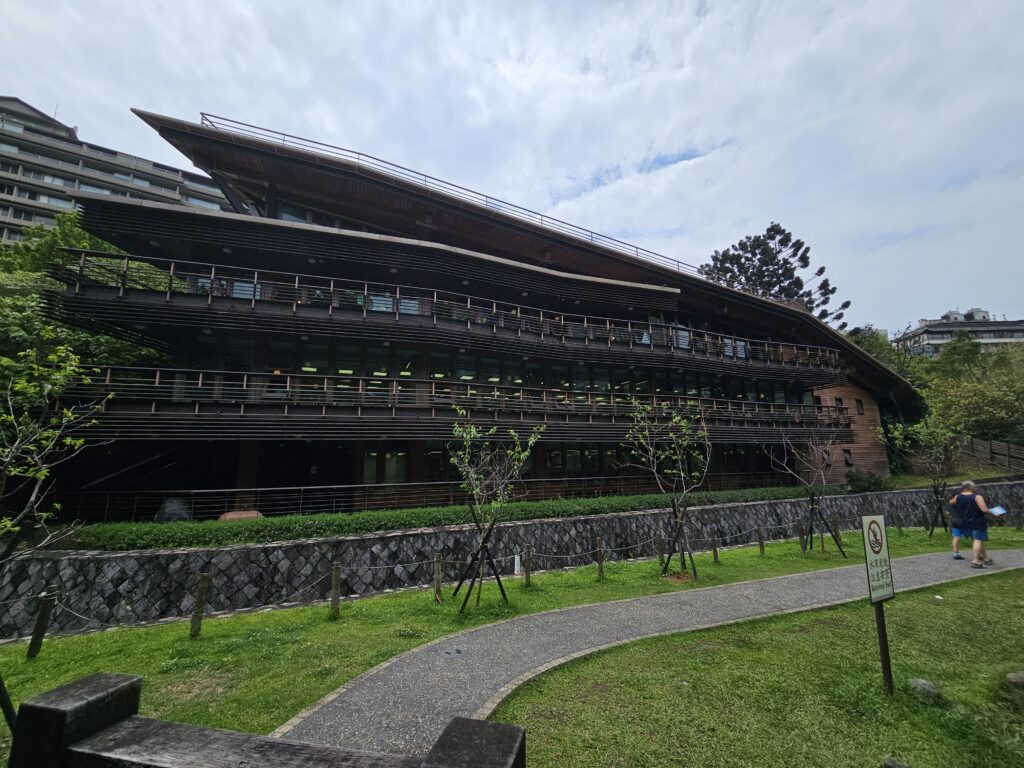
The library is adorned with a number of large windows that provides a lot of natural lighting throughout the buidling and helps to curb the use of electricity. Part of the roof is covered in solar panels which helps to store and utilize electricity for the building. The sloping roof’s drainage system is used to water the library’s plants and flush the toilets.
Since you can’t take pictures inside the library I didn’t venture in, just walked around it and checked it out. It’s a really cool looking, interesting builidng which happens to be a library.
Thermal Valley
Also known as Hell Valley, Thermal Valley, is a popular attraction in the area. It’s one of the sources that supplies the area’s hot springs. The average temperature of the water sits at a “cool” 80-100 degree celsius year round which produces a mystifying sulfur steam within the valley. There’s a nice little paved path that takes you around the valley where you can enjoy different viewpoints of the steam rising. It’s a really little walk watching the steam rise up from the depths of this blue /green spring water.
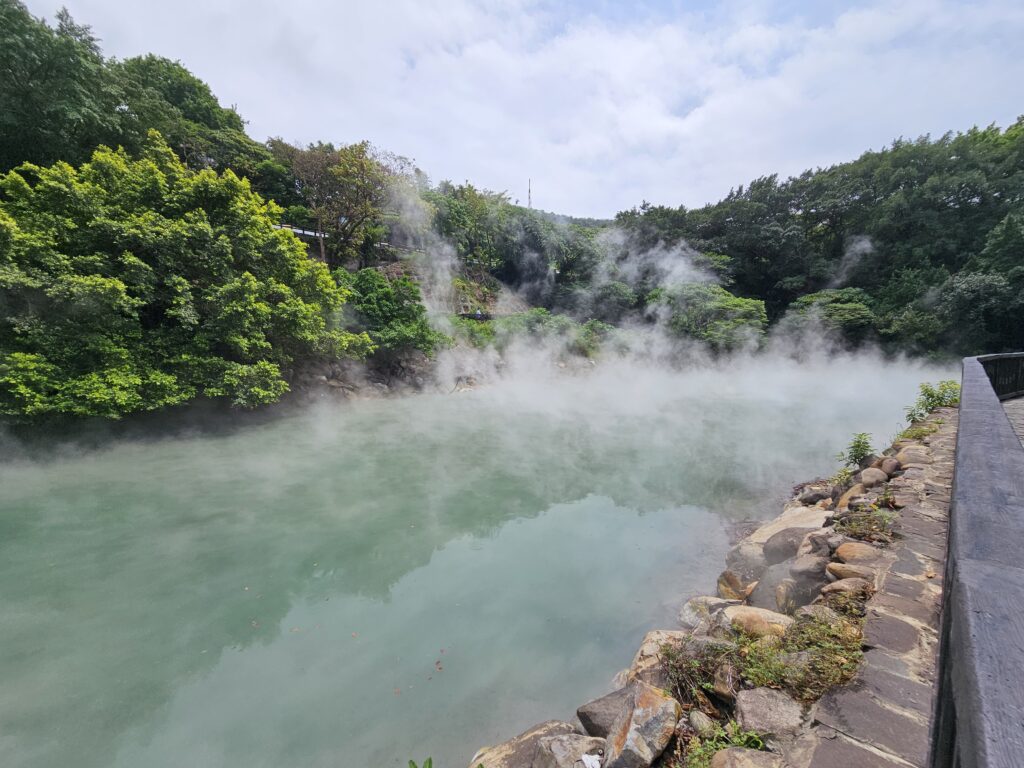
Visit A Spa Resort
If you’re visiting an area known for their hot springs then you gotta visit a spa resort right? ABSOLUTELY. There’s a wide range of spas you can visit in Beitou, ranging from the boujee and luxurious to the budget types. So it all depends on how much you’re willing to spend and what kind of experience you want to have.
I opted for more of a budget option. I really just wanted to relax for a couple hours for the experience and wasn’t looking to lounge for an entire day or even half a day. I was able to find a place that suited my needs for a reasonable cost – 1670 NTD, $51.98 USD for two hours.
It really was a perfect amount of time to relax and enjoy a nice soak at the tail end of my visit to Beitou. The water from the hot springs as one would imagine is piping hot and it’s really comforting to just relax and enjoy some peace and quiet.
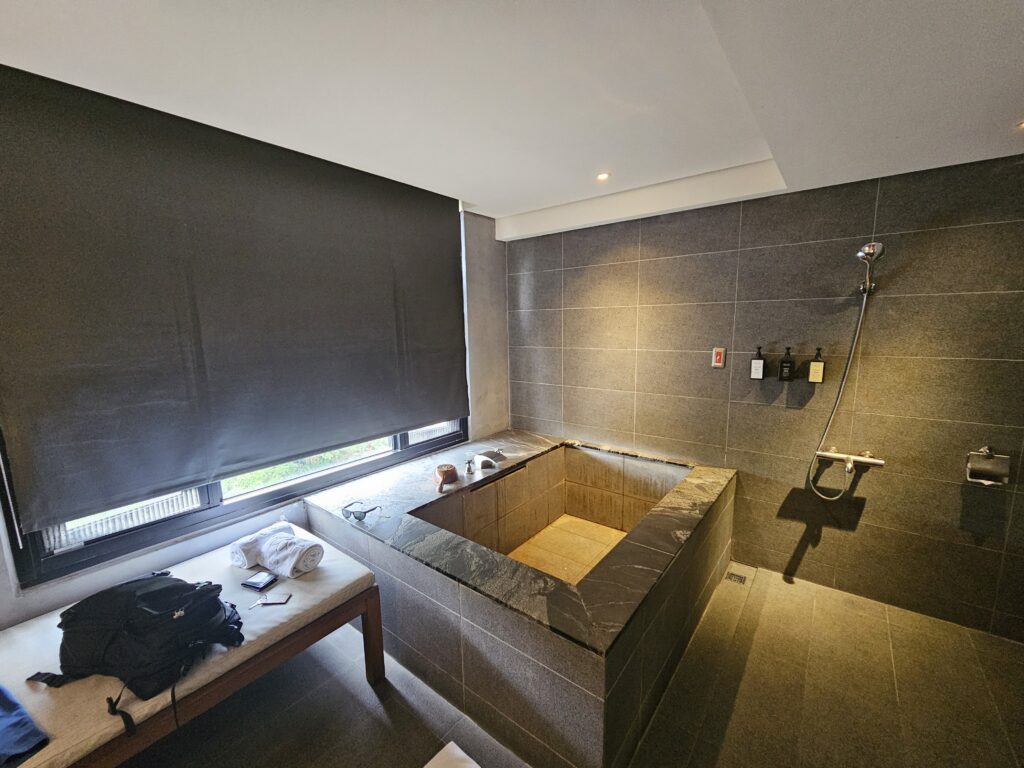
Is Beitou Worth Visiting?
If you’re visiting Taipei and want to have a totally different experience then what you’ve had in the city then 100% Beitou is worth a visit. Individually, the sights are cool, especially the Thermal Valley, but none by themselves would really warrant a time-consuming trip from the center of Taipei to get to and visit. But the sights, combined with a stay at spa, make a trip to Beitou well worth it.
Even though it’s technically part of Taipei, it just doesn’t feel like Taipei at all. Just a completely different vibe, much more laid back and less hectic. You feel like you’re in a totally different city. I really enjoyed it and would consider staying there for a night or two during my next trip to Taiwan just to fully unwind and relax at one of the spa resorts.
-
Unlock the Treasures of Taiwan’s National Palace Museum: A Captivating Journey Through Time and Culture
Table of Contents
If you’re a fan of museums and learning about a country’s culture and history, the Taiwan National Palace Museum is the place for you while visiting Taipei. Housing over 700,000 pieces of Chinese artwork and artifacts the museum is absolutely massive. Depending on how you like to enjoy your time at museums, you can easily spend half a day at the Taiwan National Palace. There’s a variety of different exhibits to view within the cavernous building and the surrounding area, which includes a huge pond stocked with koi fish.
The History Of The National Palace Museum And Its Artifacts
Originally established in China’s Forbidden City, the National Palace Museum has a history that dates all the way back to 1925. Due to fear of the valuable pieces falling into the hands of the Japanese, the musuem pieces were constantly on the move. From 1931 – 1947, the artifacts, artwork, and other objects of value, were shuttled within thousands of crates, from the Forbidden City to Shanghai to Nanjing to Anshun / Leshan then back to Nanjing.
In 1948, following the end of World War II, the Chinese Civil War resumed. It was due to the worsening conditions from this Civil War on mainland China that led to some of the artifacts being shipped to Taiwan. It’s estimated that about 22% of the original collection made its way to Taiwan. Much of it remained in China after the controlling Communist party had seized control of the National Beijing Palace Museum where many of the artifacts were being stored.
The collection was stored in the mountain village of Beigou, which is located in Taichung. Here it stayed in storage until a small exhibition hall was built in 1956 where a small sample of the artificats could be displayed.
By 1960 a special fund had been created for the construction of the National Palace Museum. It took over fiver year to build and opened in August of 1965. After 40 years traversing several cities, the many artificats, artwork, and other valuables, had found a permanent home.
The National Palace Museum Experience
The National Palace Museum isn’t located near a subway exit so it’s a little more complicated to get to as opposed to some of the other attractions and will require taking the bus if you plan on taking public transportation.
Once you do get there, you are greeted to a huge tree-lined walkway with the massive National Palace Museum looming in the distance. It’s really a beautiful setting since there’s nothing but lush greenery behind the museum. It takes your mind out of the busy city vibes of Taipei and transports you to another time and place in Taiwan’s history.
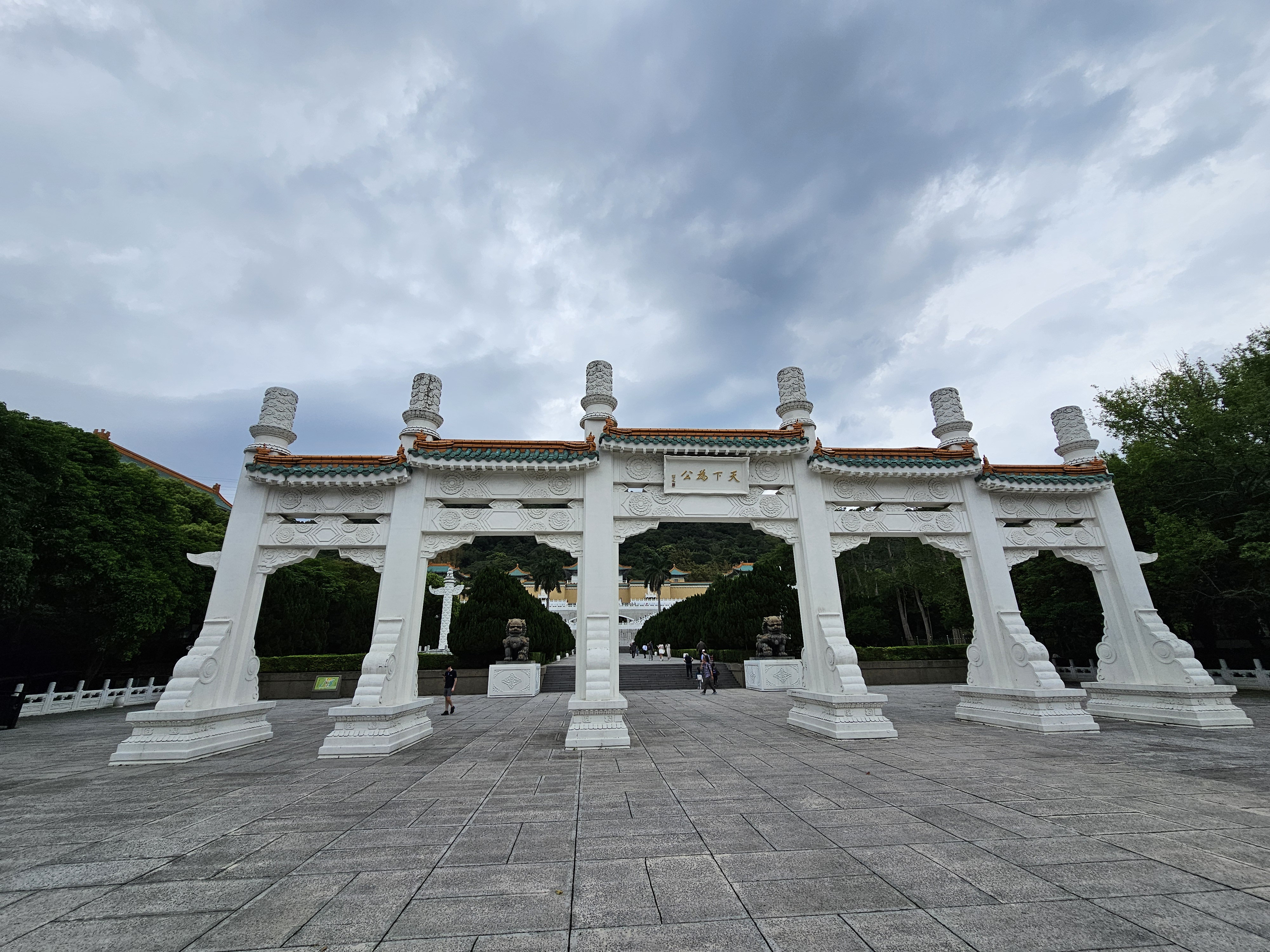
As you walk up to the museum, to the right there’s a path that leads to a huge pond that has walkways and bridges and pavilions with places to sit, escape the sun, and have a snack or drink. The pond is stacked with huge koi fish. It’s peaceful little place to take a stroll before or after the visit and take a breather. It’s cool little area.
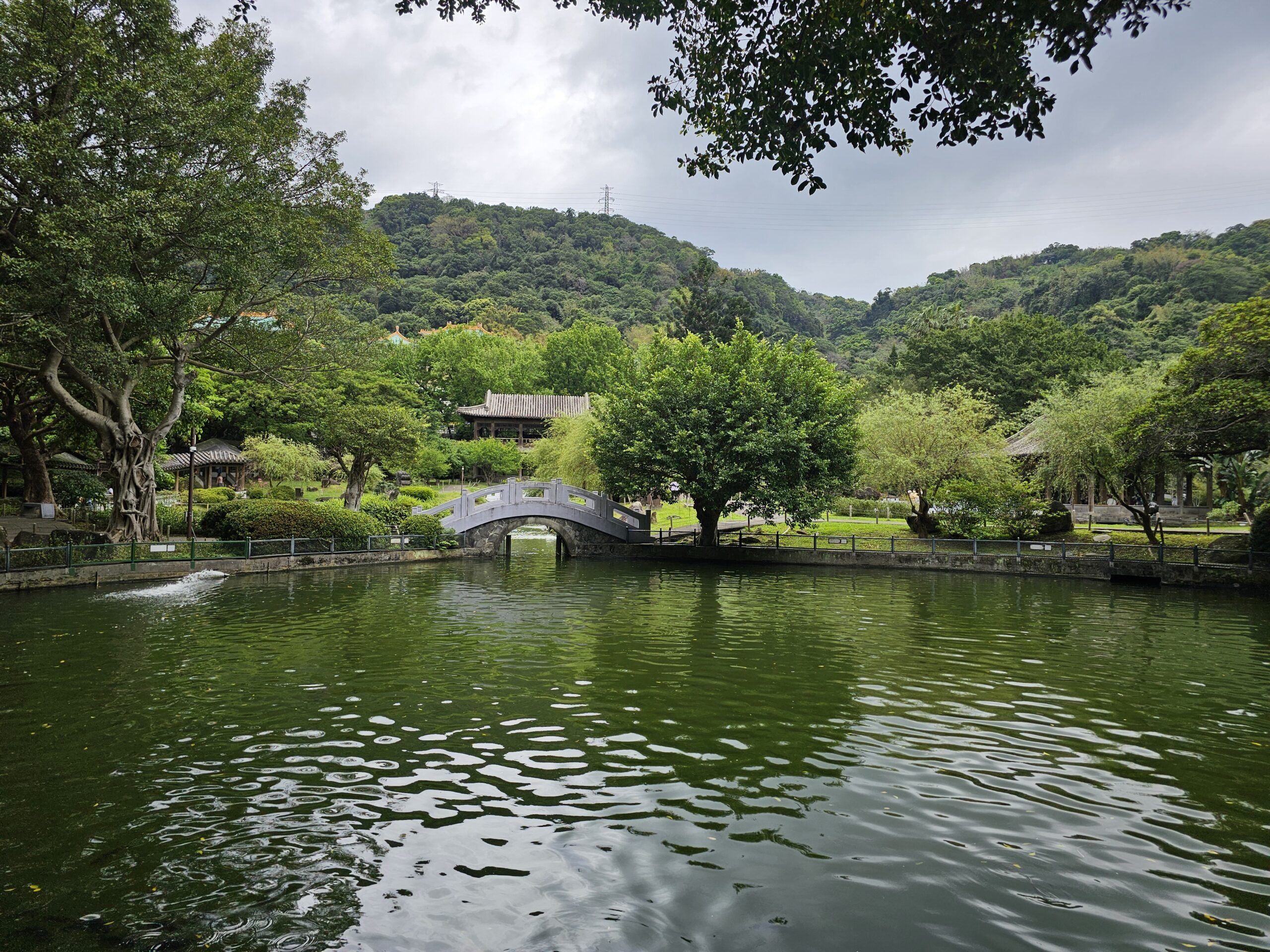
Once you make the walk to the museum itself, you’ll be impressed with the sheer size of the building. It’s HUGE. The price of admission is 350 NTD ($10.89 USD).
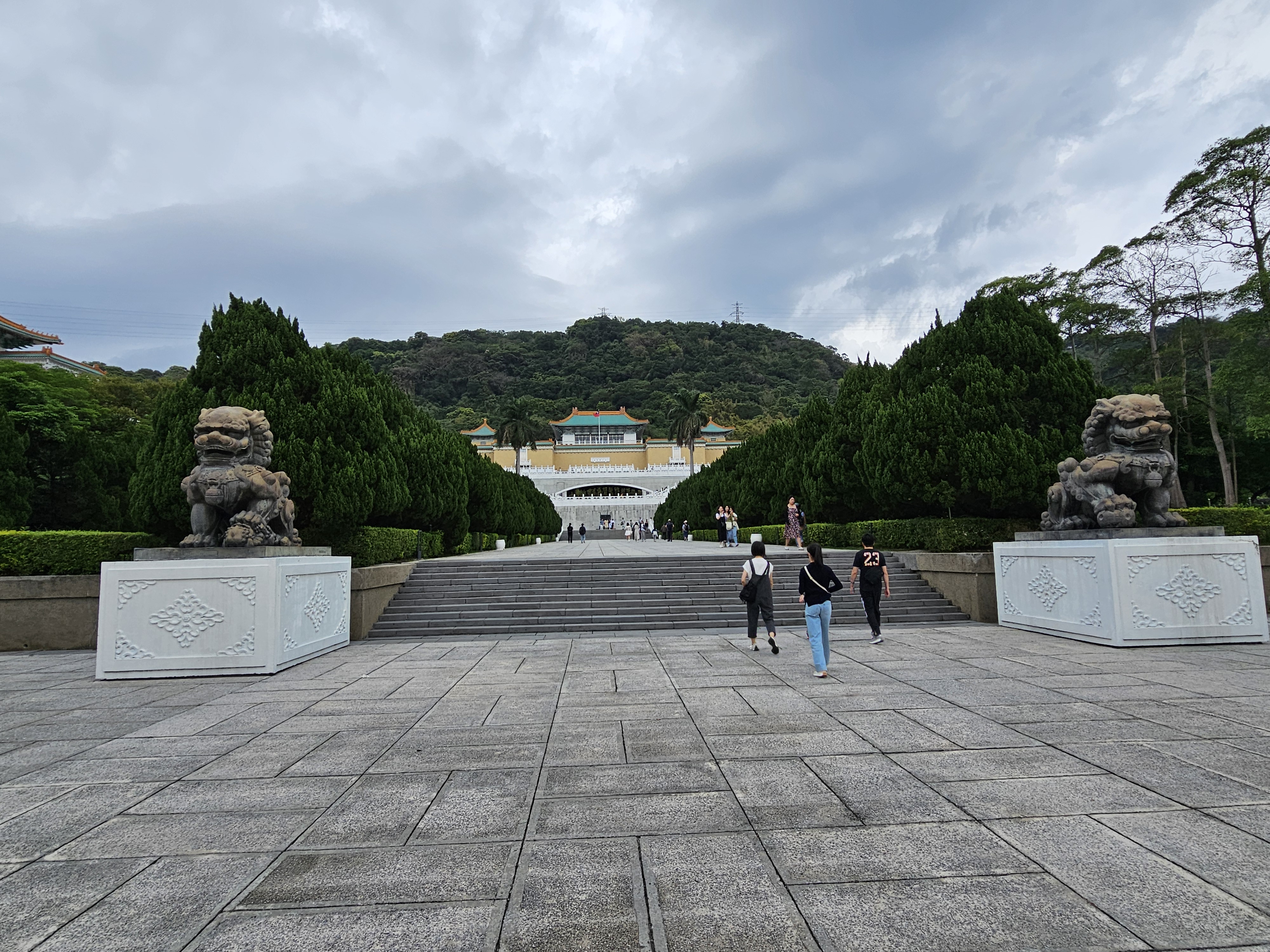
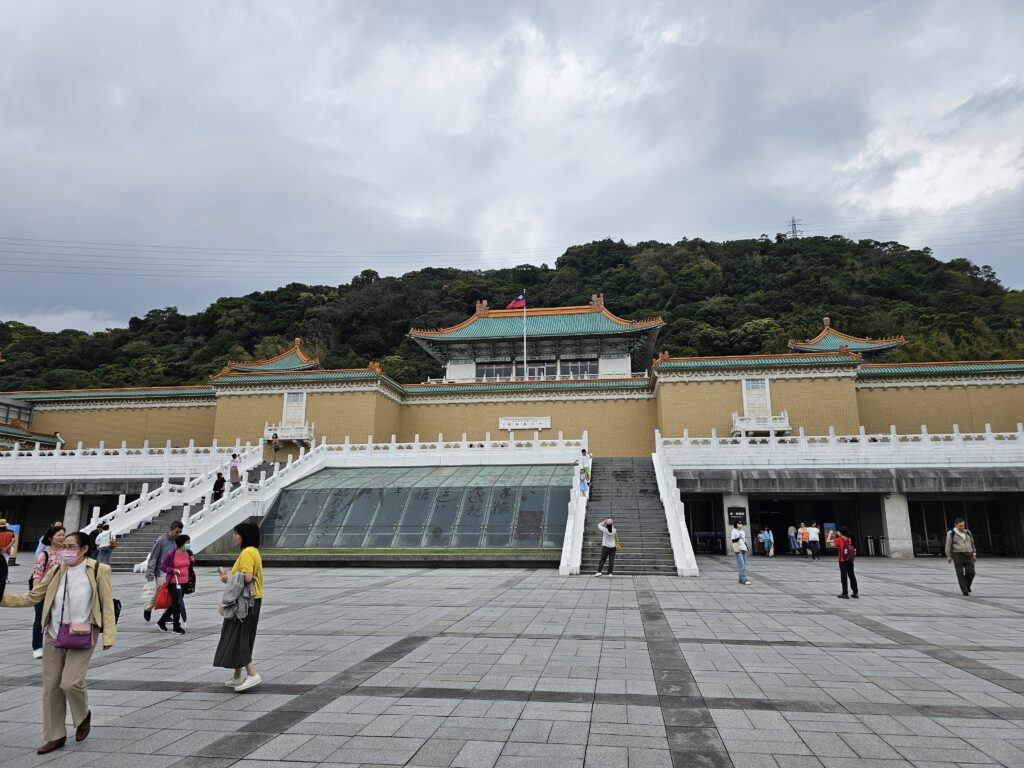
There’s multiple levels here, each absolutely packed with exhibits stocked full of all those artifacts, artwork, and other valuables that had made the journey through all those cities decades ago.
Notable Artifacts
In total, it’s estimated the museum has accumulated nearly 700,000 artifacts. Of which, only about 1% is exhibited at a time at the National Palace Museum which is about 3,000 items. Exhibits and items can get swapped out and the remaining items are stored in temperature controlled vaults.
Of all the artifacts and items at the museum, there are two which are very popular and famous.
The Jadeite Cabbage is a piece of jade that’s carved into the shape of a cabbage head with a small grasshopper hidden amongst its leaves. It’s a beautiful piece of craftsmanship.
The Meat Shaped Stone is a piece of jasper, which was carved into a piece of pork, which looks incredibly real.
Based off the official website, you’re not supposed to post any pictures of the actual artifacts on sites like this so I decided not to include any pictures of anything within the museum itself, unfortunately.
Is The National Palace Museum Worth Visiting?
If you’re going to Taipei the National Palace Museum should certainly be circled on your list of places to visit within the city. It has so much history within its walls. The exhibits are impressive and huge and are all very nicely displayed. The museum building is massive and it will take some time to walk through if you want to really see everything and learn about all the pieces displayed. The property itself is quite nice to walk around, especially the nearby pond area.
-
Watching A Fubon Guardians Game In Taipei Is Both Memorable Experience
The Fubon Guardians
Baseball is an incredibly popular sport in Taiwan. The Chinese Professional Baseball League (CPBL) is the six-team professional baseball league in Taiwan. Established in 1989, the league kicked off its inaugural season in 1990.
Through the years the league has both expanded and contracted , with four defunct teams and one team – the Wei Chuan Dragons that folded and was brought back (in 2020). The stadiums are tiny in comparison to those in the US and Japan but that makes the experience even more intimate and the fan experience even more fun. You can really get a feel for the passion that fans have for Taiwan baseball.
Throughout my time in Taiwan I was able to see games in three of the six ballparks with the Tainan City Unilions playing in every game I saw (coincidentally). So, in a way, and by sheer coincidence, I became a Unilion fan.
Fubon Guardians History
The Fubon Guardians play their home games in the Xinzhuang District in Taipei. The team has gone through several name changes as ownership has changed four times since the team’s initial inception in 1993. The team has from the Jungo Bears to Sinon, Bulls to EDA Rhinos, to the current Fubon Guardians.
Playing in Taipei, the Guardians are one of two teams in Taiwan’s capital. Taipei is the only city that currently has two teams. The Guardians play their home games at Xinzhuang Baseball Stadium which can seat up to 12,500 people. The stadium is in the middle of a large sports park.

The Game Experience
Tickets are easy to come by and you can easily walk right up to a ticket booth the day of the game and purchase a Fubon Guardians ticket. They have a variety of seating options to choose from and seats are very affordable. I got a seat along the first base line at field level for only 500 NTD ($15.58 USD).

You can bring in outside food and drinks and I just walked right in with a backpack with no one checking it or anything. I could certainly tell I wasn’t going to a baseball game in the US.
Of course, being in Taiwan the concessions were are a little different than what you might find in the US. There’s Taiwanese fried chicken, boba tea, sushi, a Family Mart (a popular convenience store chain in Asia), and many other stalls selling Taiwanese centric food and snacks.
There’s also familiar fast food places like McDonald’s and Dominos here too. I grabbed some fried chicken, a bag of seaweed flavored chips and a tea and soaked it all in.
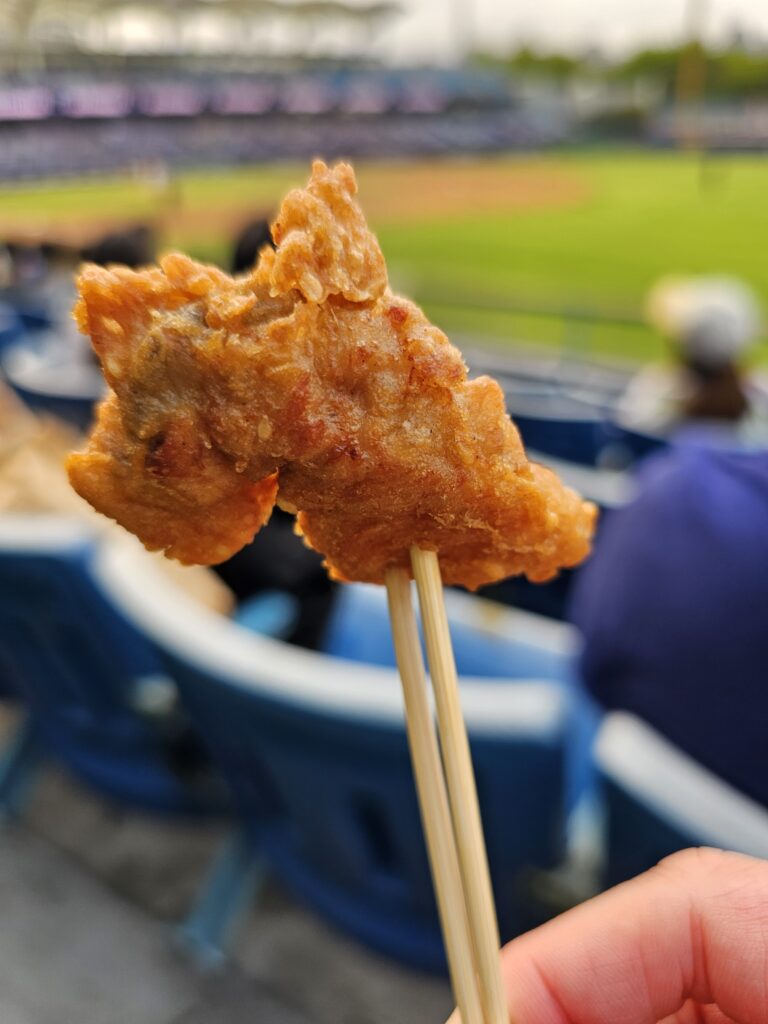
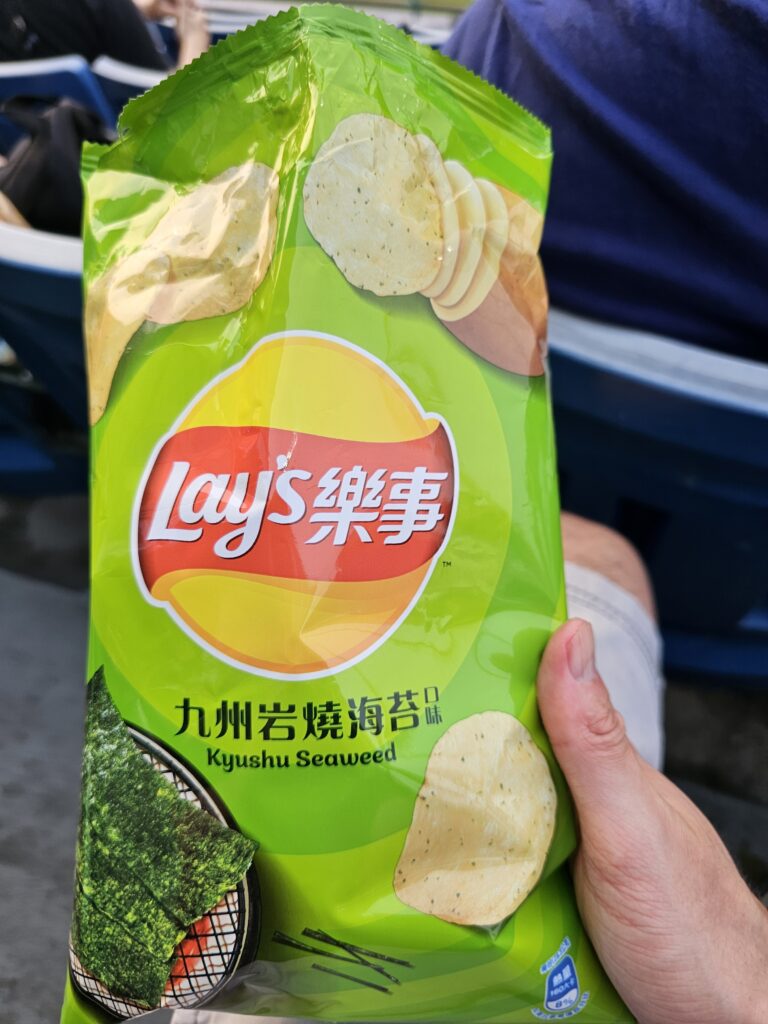
Even though the stadium was small and not overly packed, it was very lively. The fans and enthusiasm was awesome. There’s essentially what amounts to a “hype man” that leads the crowds with singing, chants, and various arm movements, the ENTIRE game. This doesn’t fall onto deaf ears with the crowd very much engaged and following the “hype man’s” lead. Everyone is chanting, singing, and mimicking the “hype man” so it does get pretty loud. The crowd also goes wild with every ball in play. A hard hit ball, a double play, a fly out, there’s a lot of oohs and ahhs and genuine excitement for routine baseball plays.
There’s also Guardian cheerleaders, yes, cheerleaders at a baseball game, that are on top of the dugouts dancing. It just adds to the entertainment value and atmosphere of the game and really fits right into everything that’s going on.
I’ve been to a baseball game in Japan and this was a very similar atmosphere albeit in a smaller size. It’s so much different than watching a game in the US. The fans are there having a great time, are really engaged in every pitch, and are super passionate for their teams which they aren’t afraid to show! It’s a really fun time and is great way to wind down after a long day of doing touristy things.
-
Discover the Wonders of Taipei Zoo: The Ultimate Wildlife Haven In Taiwan
One of the ten largest zoos in the world and the largest zoo in Southeast Asia, Taipei Zoo is a extremely popular attraction for visitors to Taipei (100 NTD, $3.13). I generally don’t go out of my way to visit zoos while traveling but made an exception for this zoo, since it sounded like it was no ordinary zoo and a must see attraction while in Taipai.
The History Of The Taipei Zoo
The current location of the Taipai Zoo (located in the Muzha district in the southern part of Taipei) has been operational since 1986. The zoo itself is over 100 years old dating back to 1914 when Taiwan was still under Japanese sovereignty. This original zoo was located in the Yuan-shan area, in the northern part of Taipei. It covered about 14 acres. In 1973 it was determined that a newer, more modern zoo with ample space was needed in order to grow.
It took 13 years to construct the Taipei Zoo as it stands today (with improvements and expansions also taking place through the present). The current zoo is 407 acres with 222 acres accessible to the public on their visits. This is a massive zoo to visit to say the least.
The Many Displays At Taipei Zoo
It has several terrain themed outdoor displays including a Formosan , Tropical, African, Desert, Australian, Temperate, and Bird World. Indoor exhibits include a Insectarium, Penguin House, Koala House, Amphibian and Reptile House, Giant Panda House, an Education Center, and the impressive Pangolin Dome. These zones are all quite large and house a wide array of different types of animals and species.
The layout of the Taipei Zoo, due to the many acres it lies upon, is quite wide open. It was definitely busy the day I went, but it never felt like it was overly stifling. There was still enough space while walking around as the roads and pathways are pretty wide open with plenty of viewing area space.
You can easily spend the whole day, or at the very least half a day here.
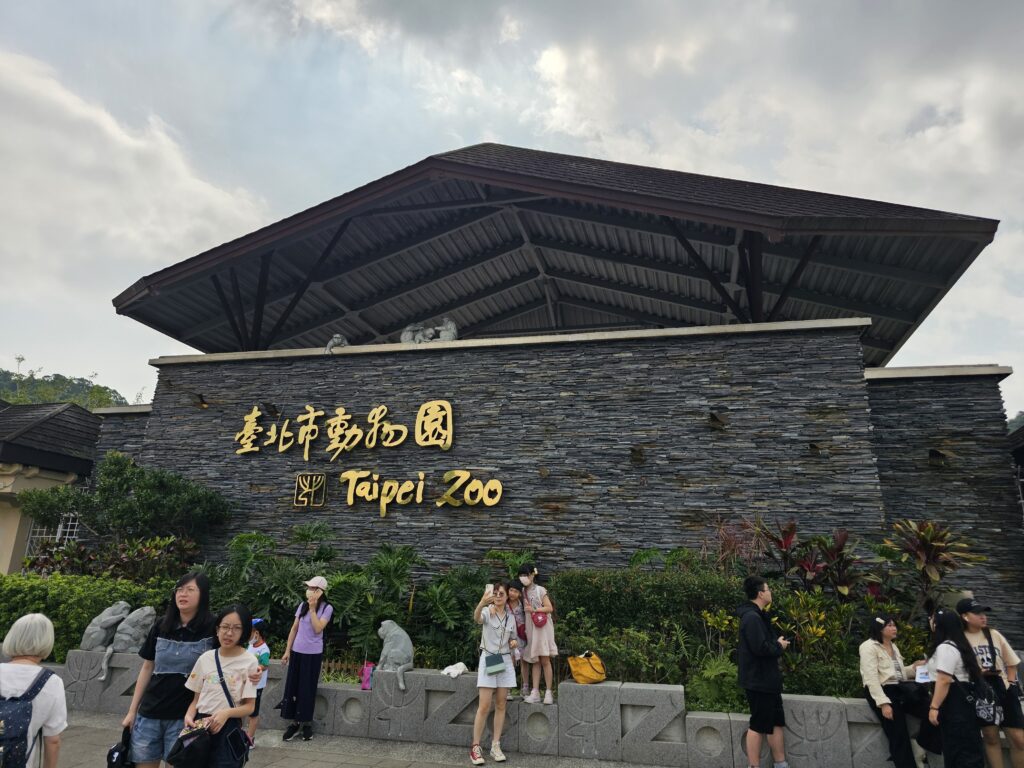
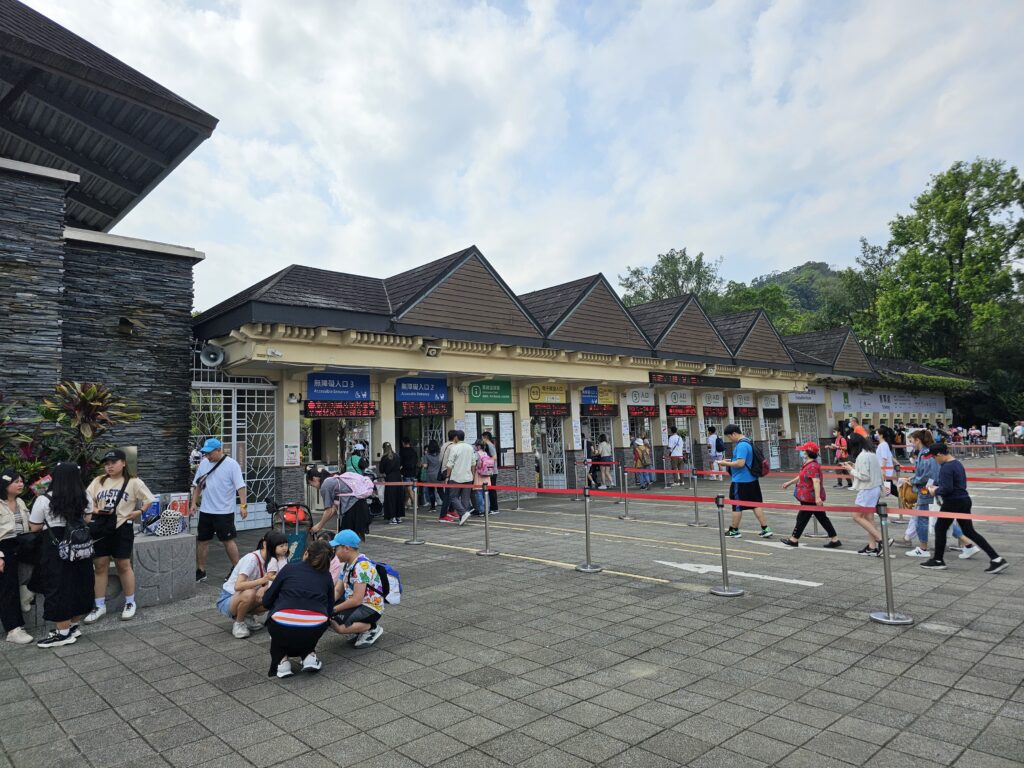
The Panda House
I was looking forward to seeing the Panda House. I couldn’t recall the last time, if ever, seeing a panda in person. The Panda House is obvioulsy one of, if not the most popular attraction at the zoo as one would imagine. You get in a line that moves through the indoor display which has two separate panda exhibits within it (the pandas are separated).
The line is constantly moving so you only have a few opportunites to snap some pics as you move into and out of the exhibit at a pretty quick pace. It’s a smart way to keep people moving since the indoor display would be way too packed with minimal visibility if they didn’t keep the line moving at all times.
The panda themselves are goofy and adorable. One of the pandas was passed out and the other was crusing around their display at the time I went. Very cute without a doubt.
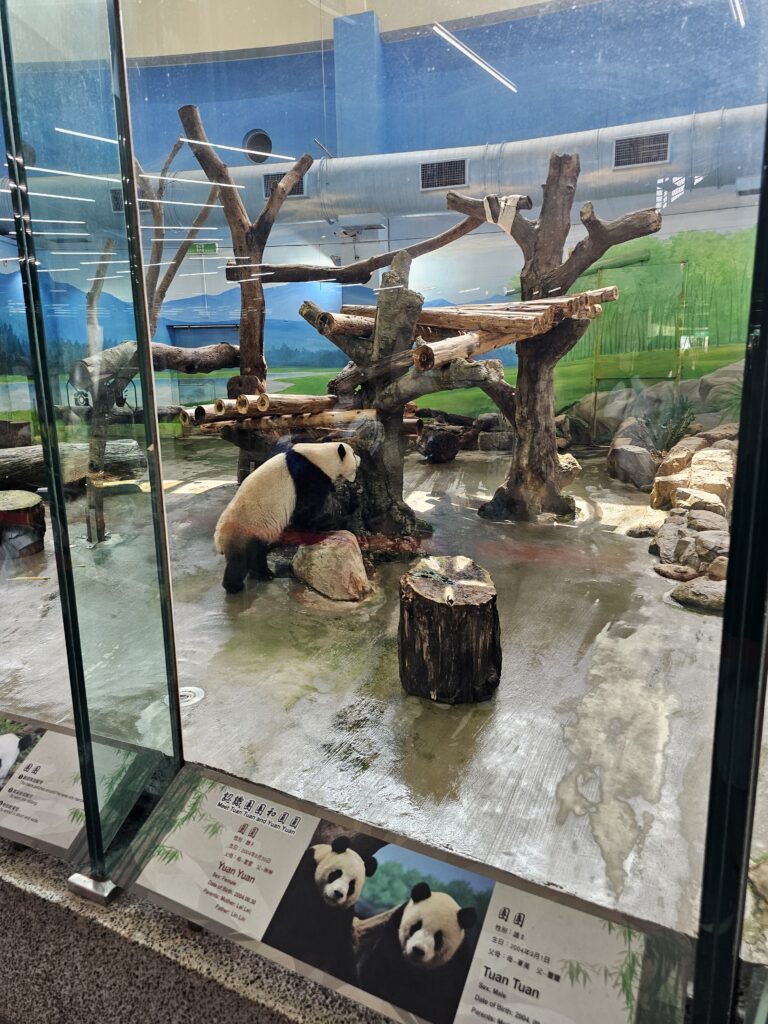
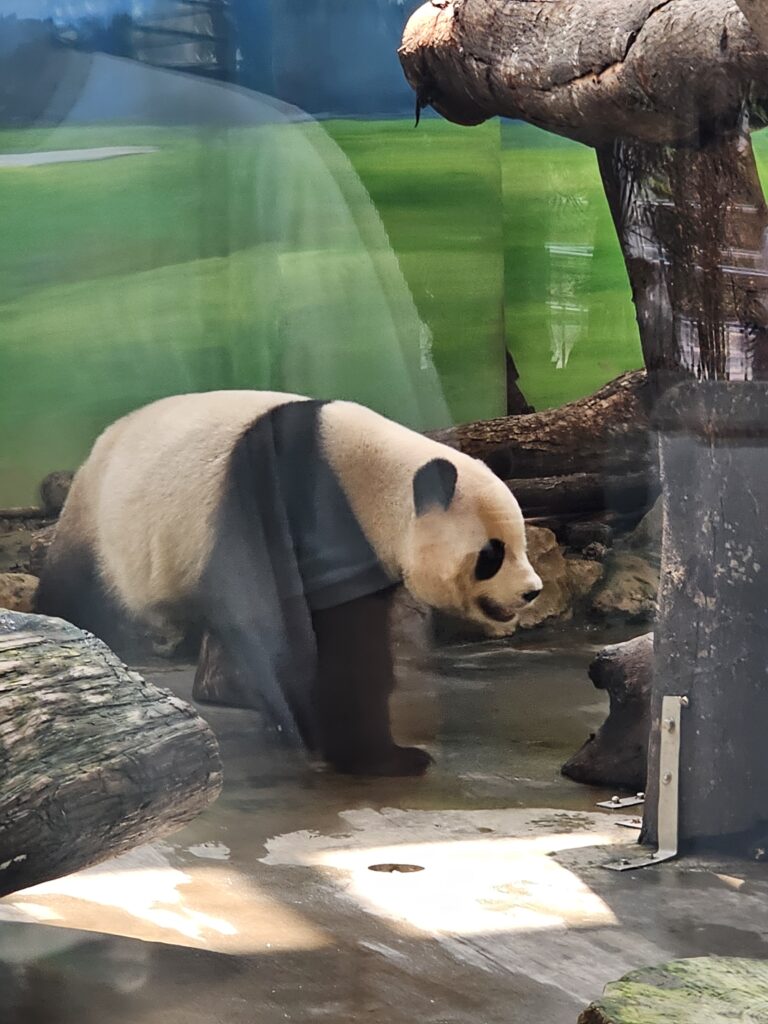
The Pangolin Dome
Built in 2013, the Pangolin Dome is the tropical rainforest area in the Taipei Zoo. It’s a 78-foot dome that houses over 40 animal species and 250 plant species. What makes the dome special is that for a large portion of it, there’s a pathway that spirals throughout it from the bottom floor up to the top. There’s animals and birds moving around freely with a large pool that has several different types of fish and other aquatic species swimming around in.
There’s also a Nocturnal Zone within the dome. This exhibit is enclosed and dark, with only dim red lights illuminating the nocturnal critters housed here. There’s a fat-tailed dwarf lemur, Azara night monkey and pygmy slow loris included in here, which you may or may not see, depending on their mood lol.
The Pandolin Dome is just really cool to walk through with all the animals and trees, and plants. It was definitely my favorite exhibit at the zoo!
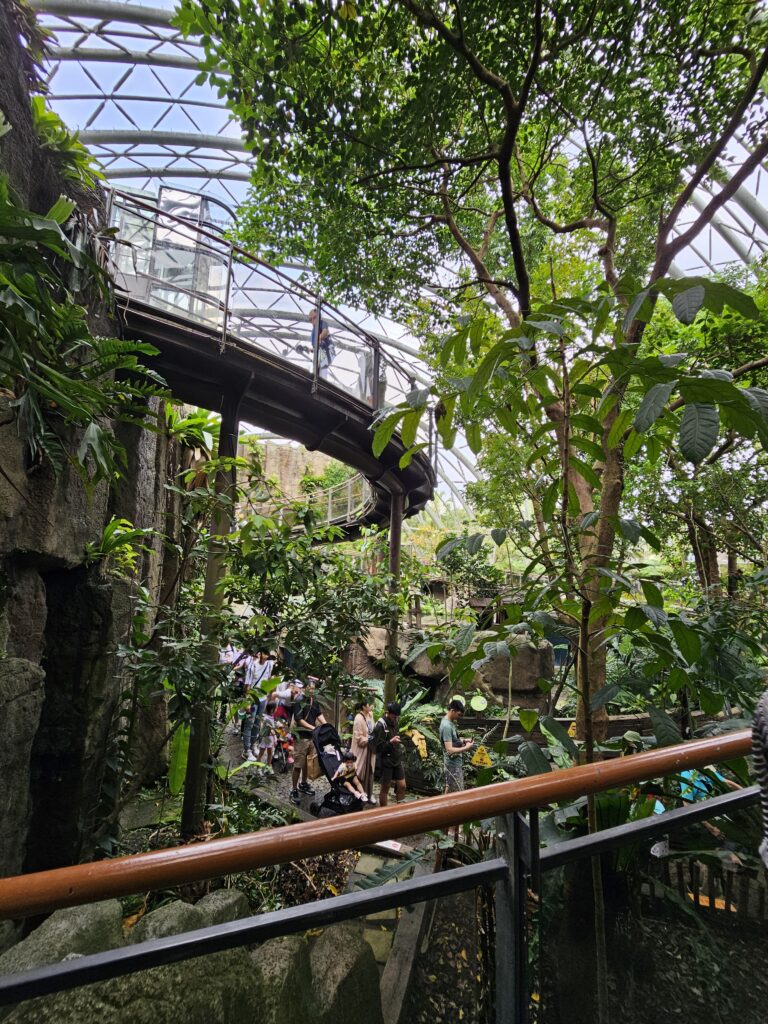
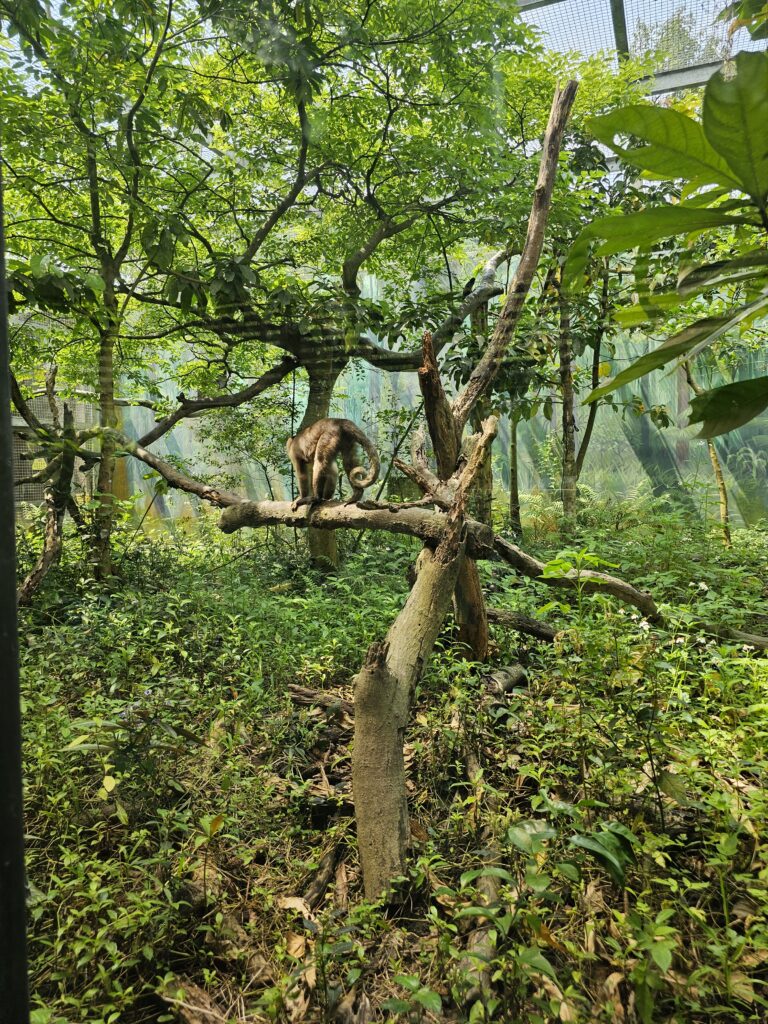
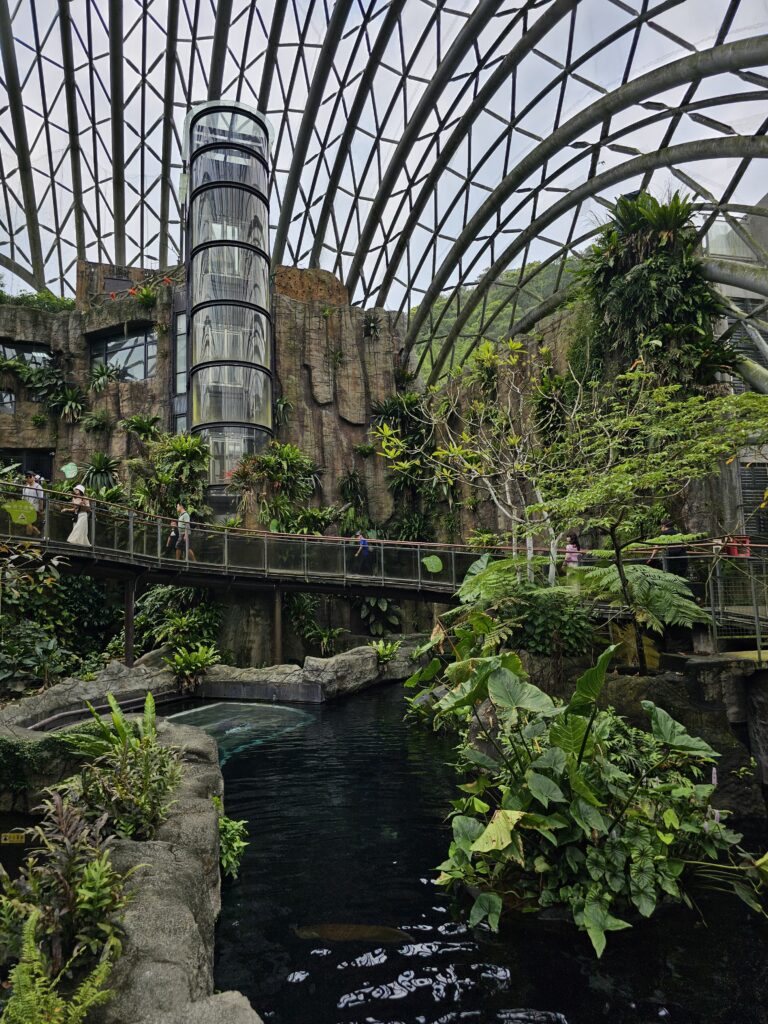
Is The Taipei Zoo Worth Visiting?
Without a doubt the Taipei Zoo is one of Taipei’s biggest attractions and is a must visit. It’s one the largest zoos in the world and the exhibits are really nice. The number of animals and species spotted throughout the numerous exhibits was really cool to see. The Pangolin Dome by itself is worth the visit. I’ve never seen anything like it at any zoo I’ve been to. For only 100 NTD for admission, it is well worth visiting!
-
Chiang Kai-shek Memorial Hall: An Absolute Must-See Landmark in Taipei
Chiang Kai-shek Memorial Hall in Taipai, Taiwan is a national monument and is a must visit attraction during any trip to Taiwan.
Chiang Kai-shek Memorial Hall History
The Memorial was built as tribute to Chiang Kai-Shek who was a well-known president of Taiwan that passed away in 1975. Construction started on the memorial in 1976 and was completed and opened to the public in 1980.
The sprawling park is a total of 240,000 square meters and is really a wide space. The memorial includes historical exhibits that details the history of Chiang Kai-shek. The monument is surrounded by a large park, with ponds, gardens, and the Memorial Hall Square. The National Concert Hall and National Theater are located on the left and right sides of the Memorial Hall, as well.
On the west side of the memorial is the Gate of Great Centrality and Perfect Uprightness, a huge main gate to the memorial which will lead guests to the Memorial Hall Square and directly to the main Memorial.

A view looking out from the main memorial. You can see the National Concert Hall, National Theater, and main gate in the distance Chiang Kai-shek Memorial Hall And Grounds
The centerpiece of the memorial is the memorial hall. All white with an octagonal blue roof, the Chiang Kai-shek Memorial Hall really stands out. It’s quite a striking structure. If you enter through the main gate, you’ll walk through the Memorial Hall Square and the wide pathway which will lead you to to hall. It’s a nice walk as you stroll past the National Concert Hall and National Theater and the immaculate gardens as you approach.
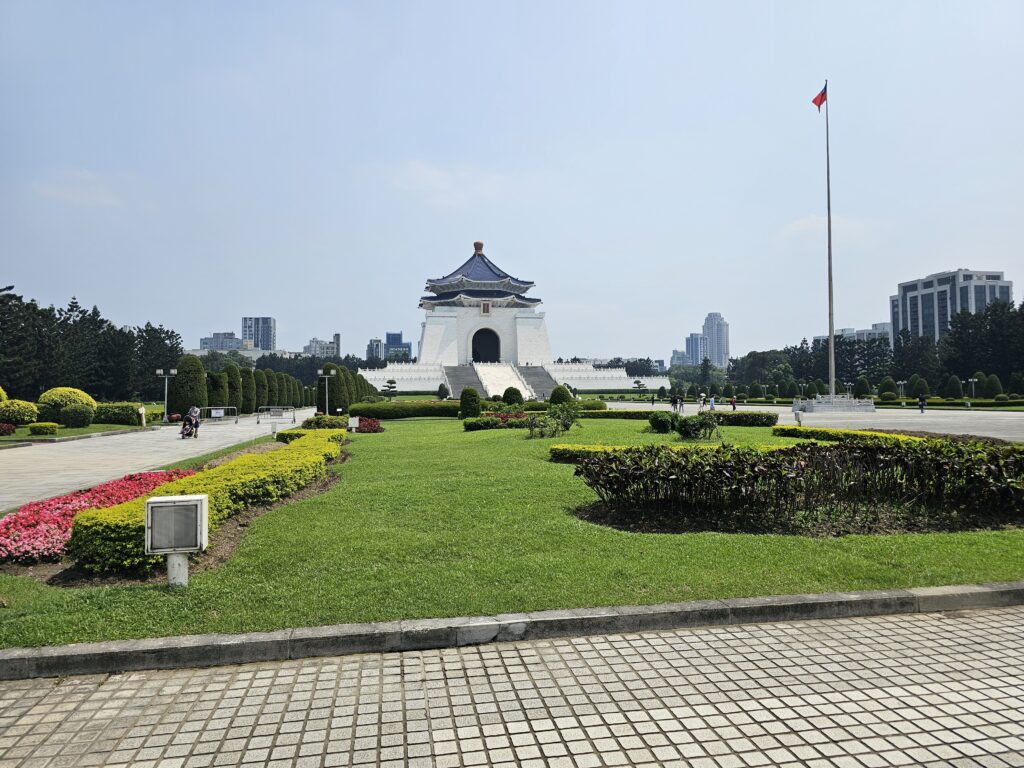
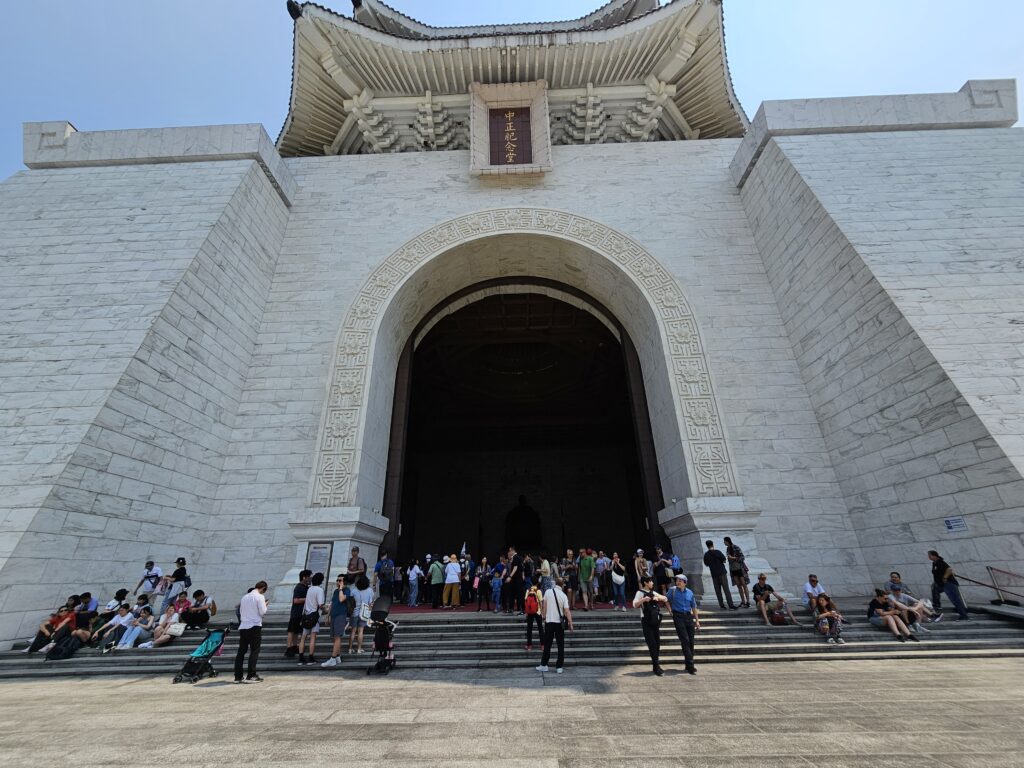
Once you get to the foot of the hall, you must walk up 89 steps, which represents the age of Chiang Kai-shek at his death. The steps lead you to the hall entrance. Within the hall is the 21 ft bronze statue of Chiang Kai-shek. It was here (the location has changed recently) that the changing of the guard took place. The ceremony is an impressive display to behold with how meticulous every movement by the guards is mirrored and synched perfectly to one another. It was definitely very cool to witness.
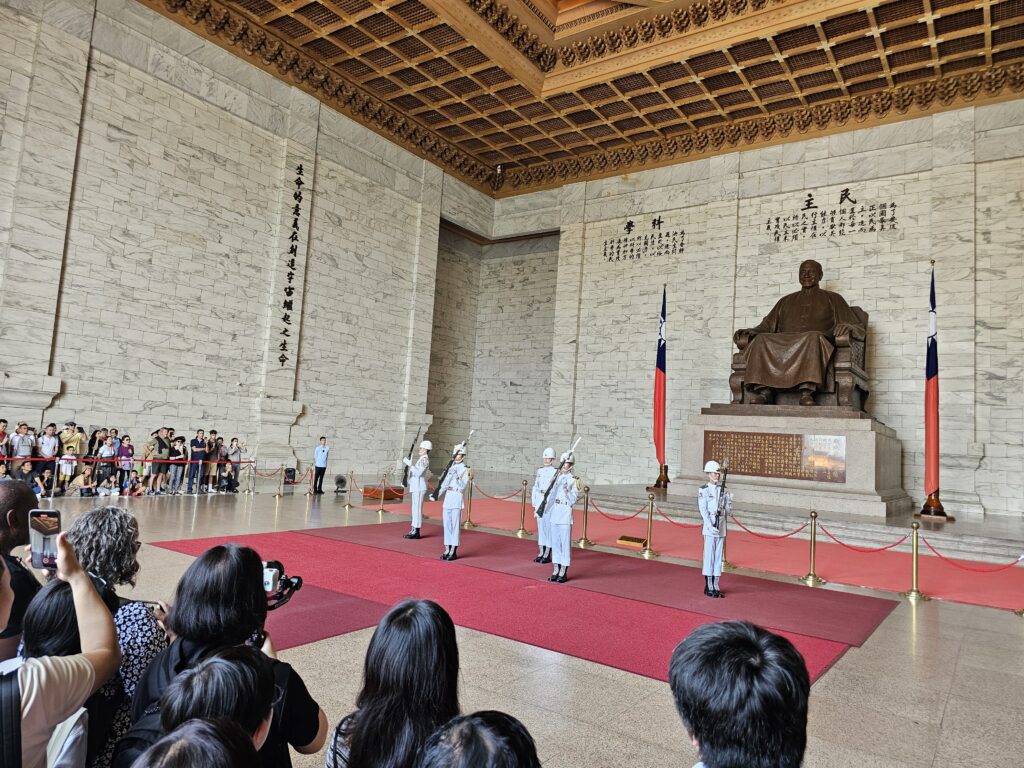
The gardens are very well kept and the area is quite nice to walk around and enjoy either in the walk up to the hall or just walking around the area after you’ve visited the hall.
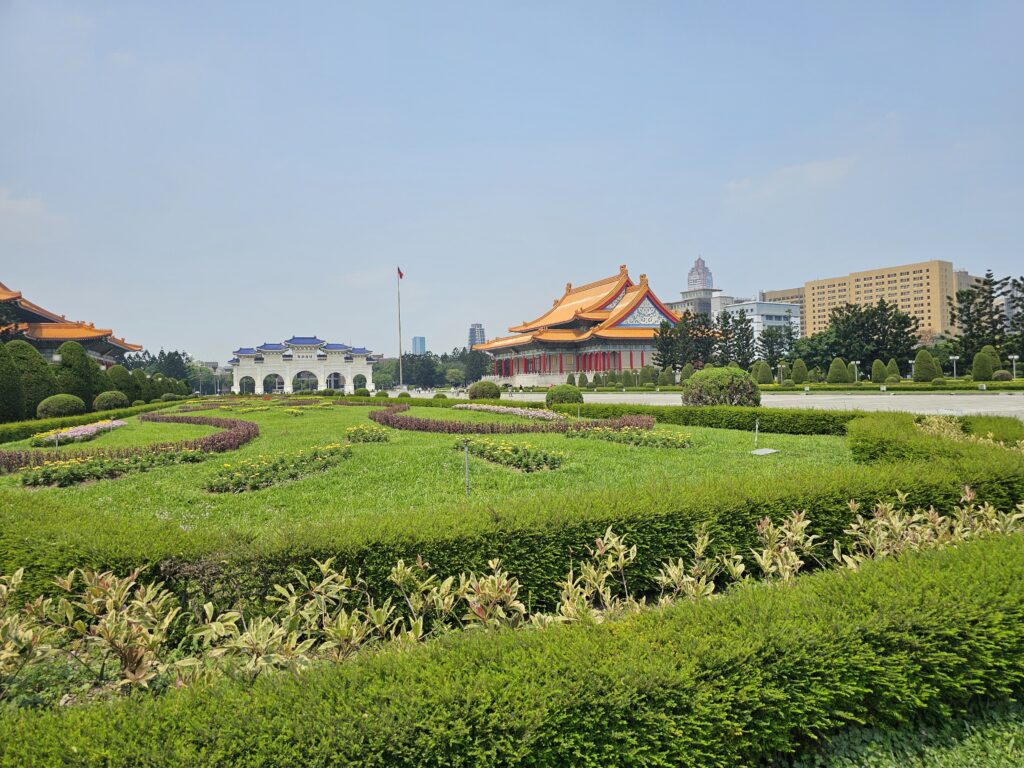
If you’re a history buff a trip to the memorial’s exhibit area is a must. This area details the life and career of Chiang Kai-shek while also detailing the history of Taiwan and its development. It’s fascinating to walk through and take in. I didn’t have any knowledge of Chiang Kai-shek and what he meant to Taiwan so it was interesting to get some insight to his accomplishments.
Within the memorial there’s also a couple of places to eat and grab drinks and also some gift / souvenir shops to check out as well.
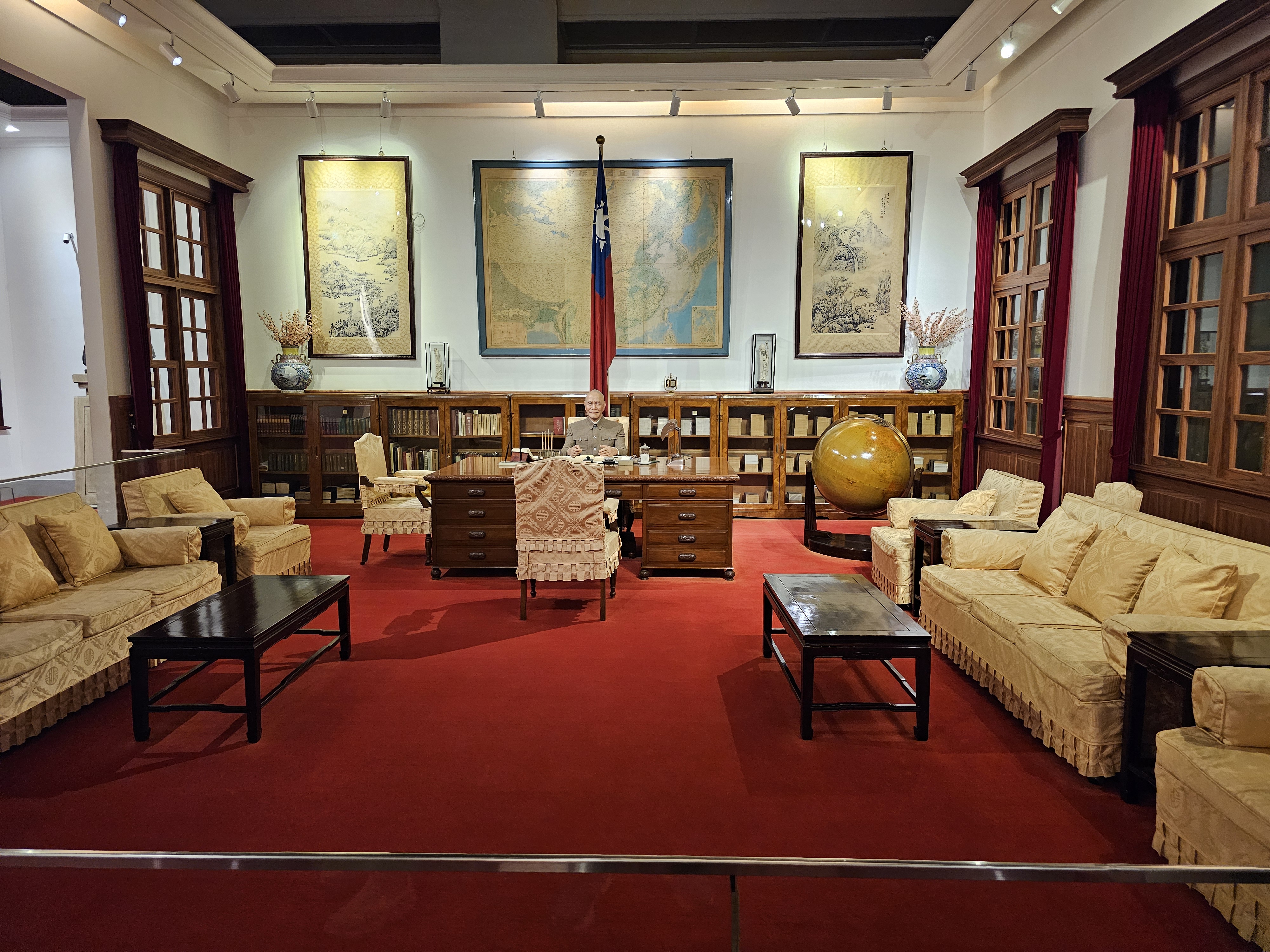
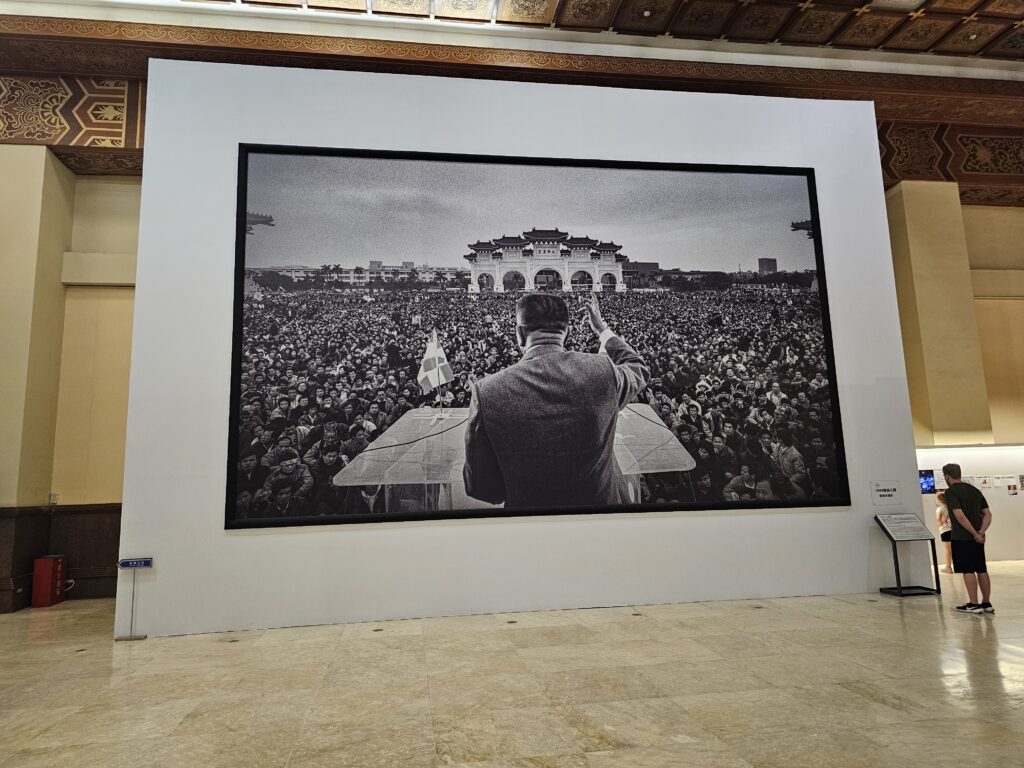
Is Chiang Kai-shek Memorial Hall Worth Visiting?
The Chiang Kai-shek Memorial Hall is absolutely worth a visit. It’s one of the premier attractions in all of Taiwan and cetainly Taipai. The memorial hall groundls, with the tranquilty of the gardens and the beauty of the architecture of National Concert Hall and National Theater, is a treat to walk through. The exhibit halls are interesting to walk through to learn some historical tid bits of Chiang Kai-shek and Taiwan.
You can easily spend two to four hours walking around the area to soak everything in. It’s definitely worth the time and will be a very enjoyable experience!
